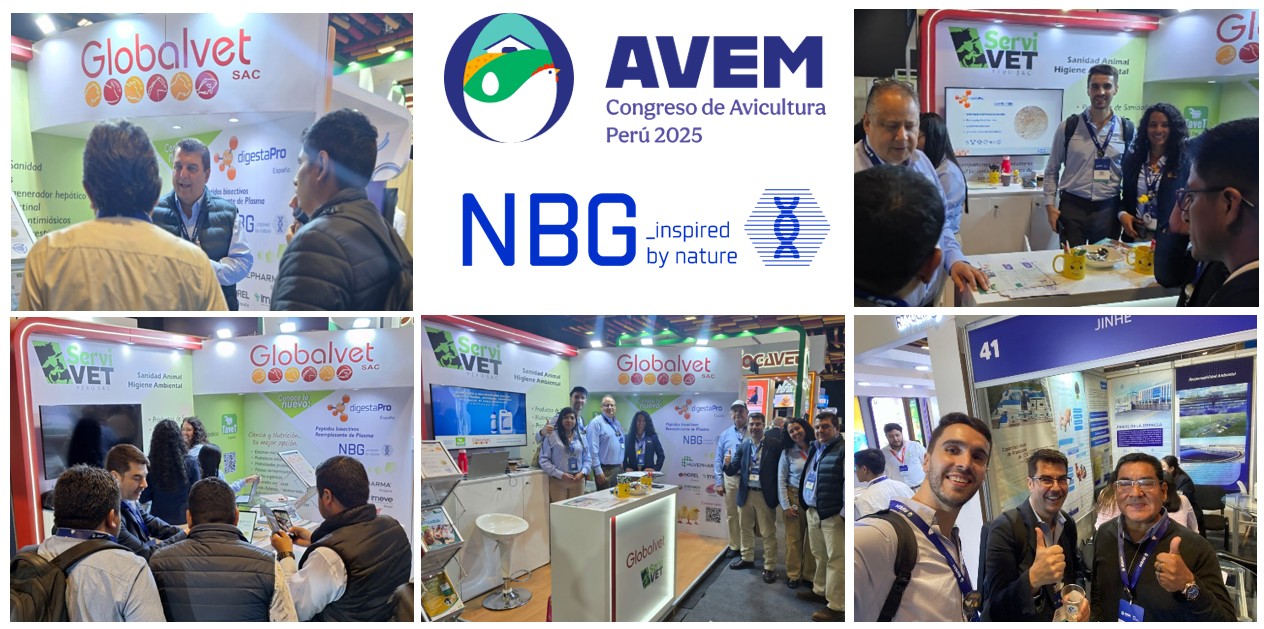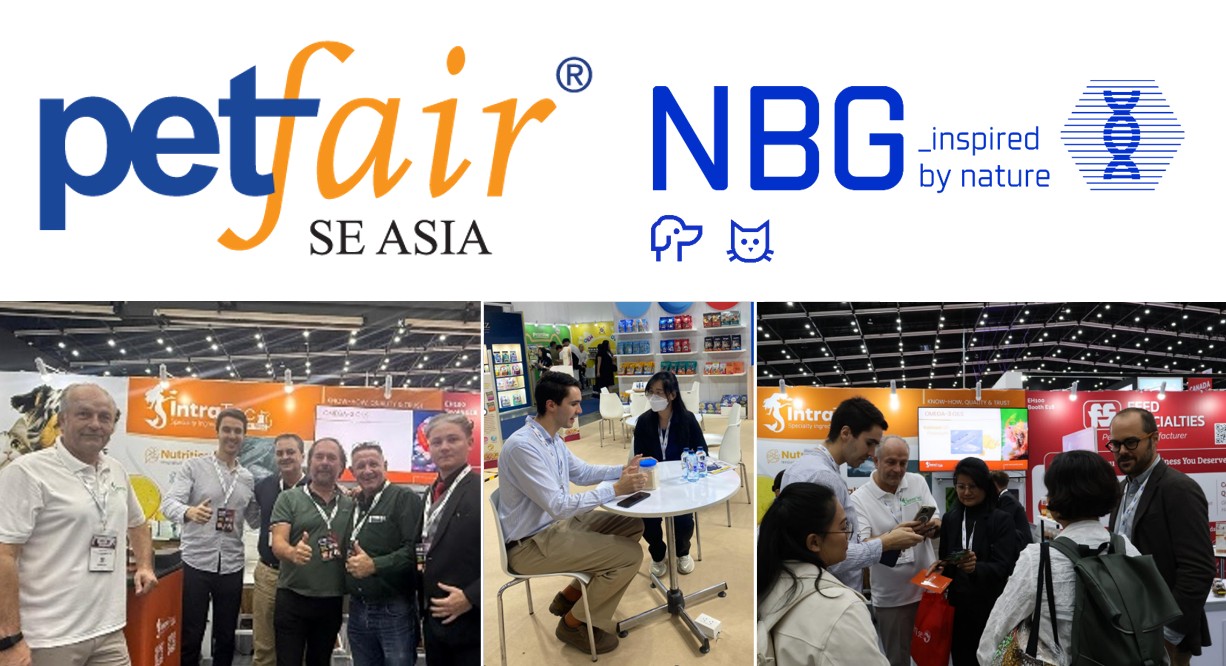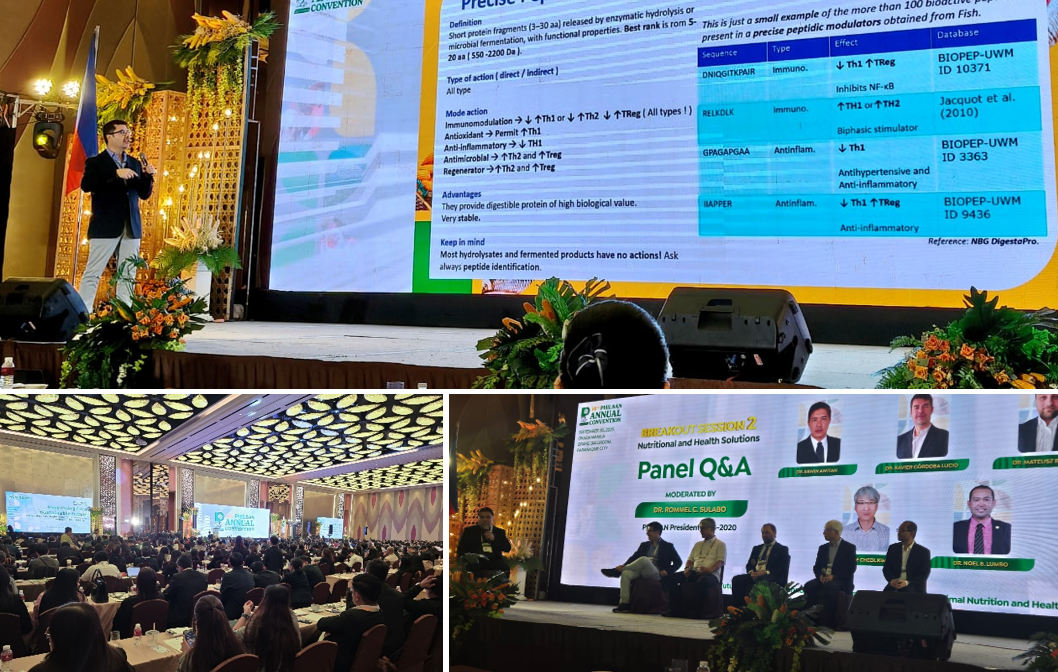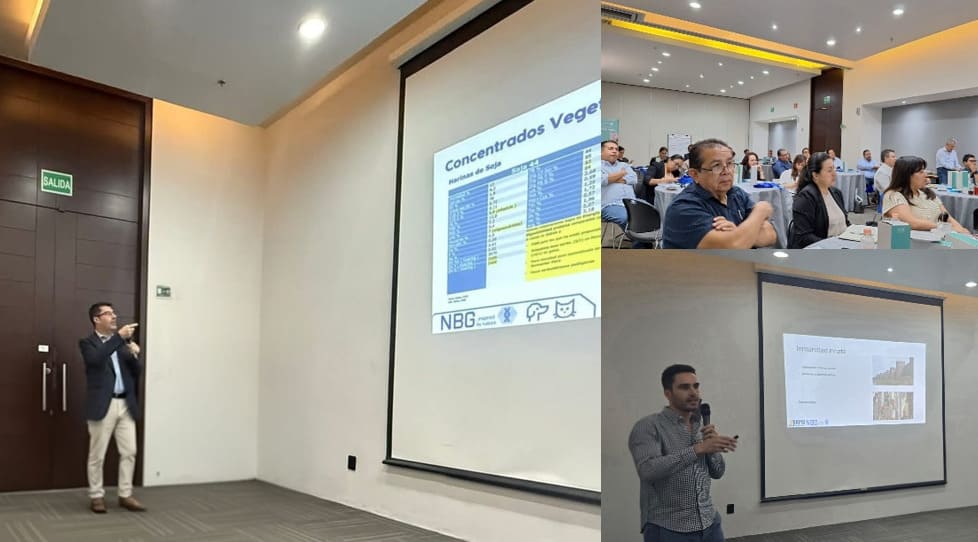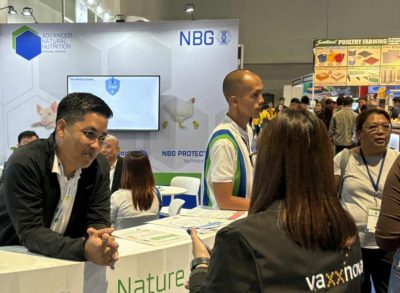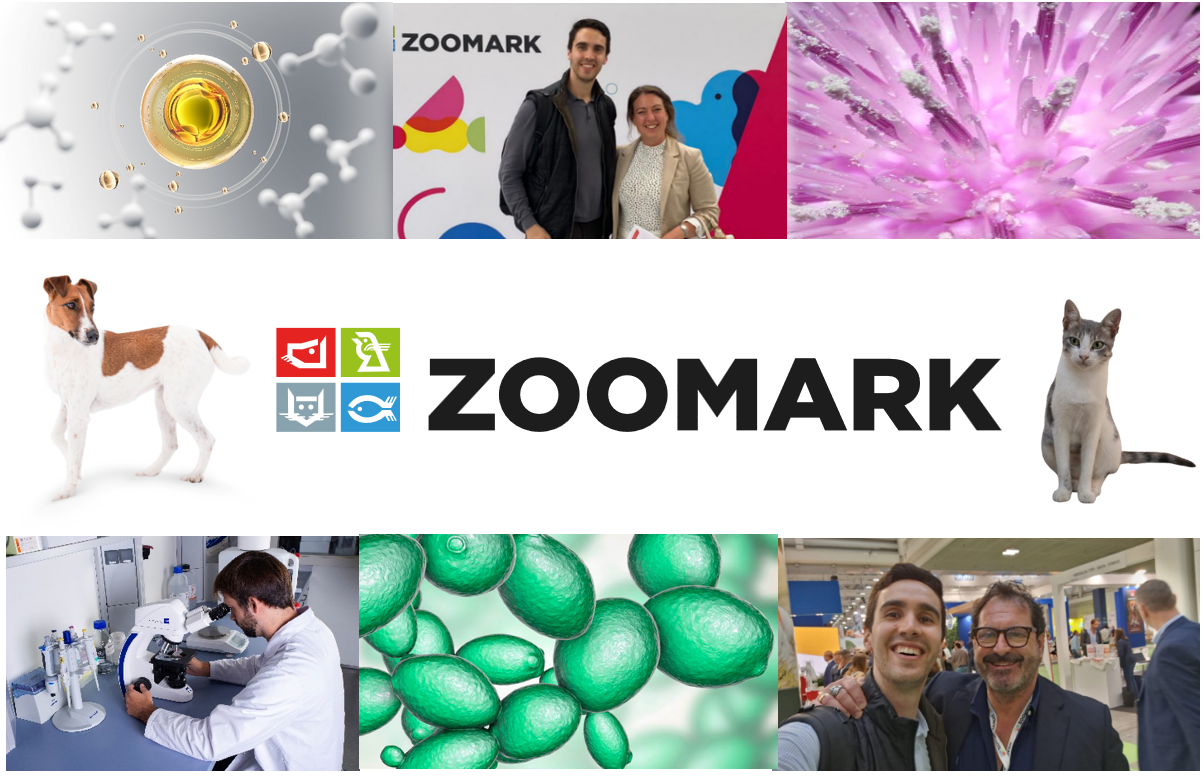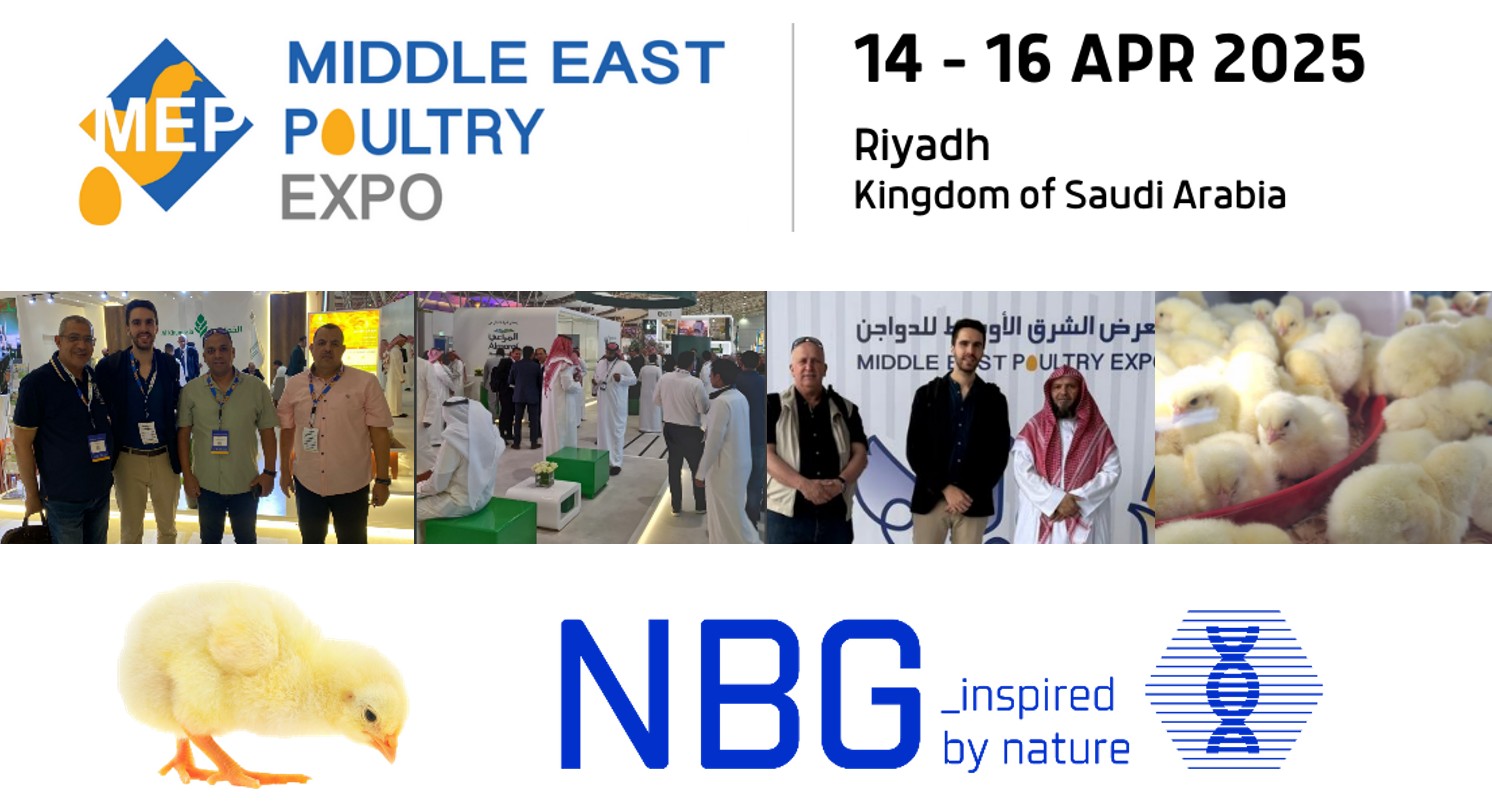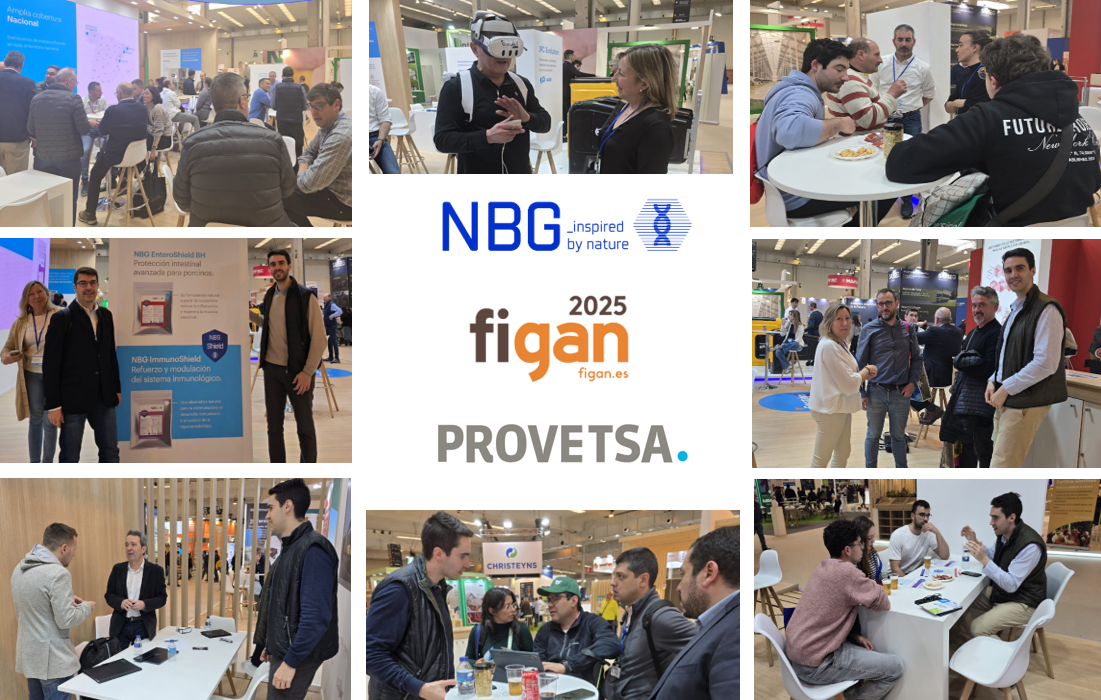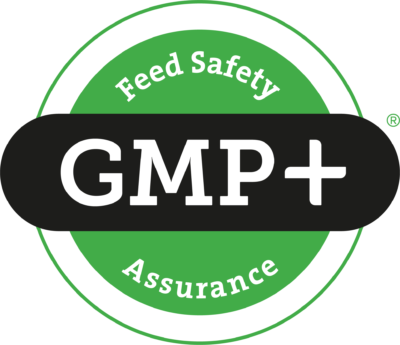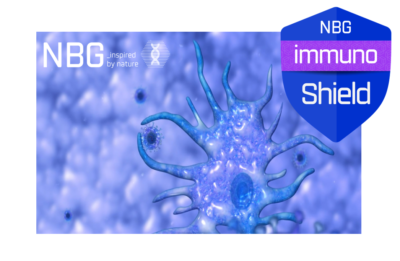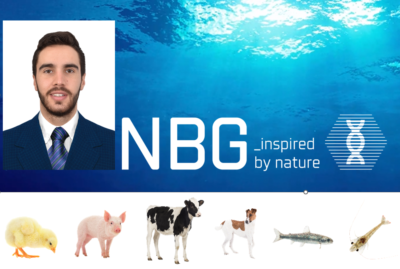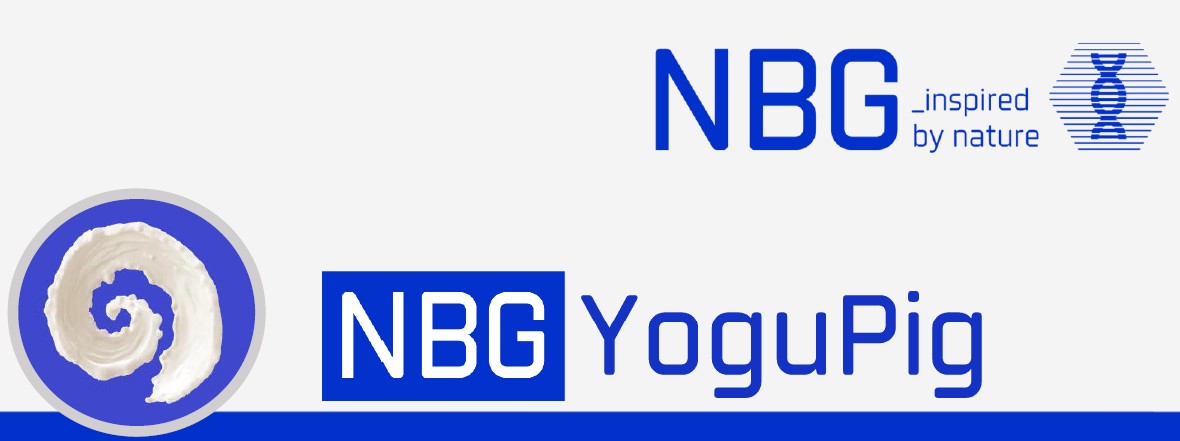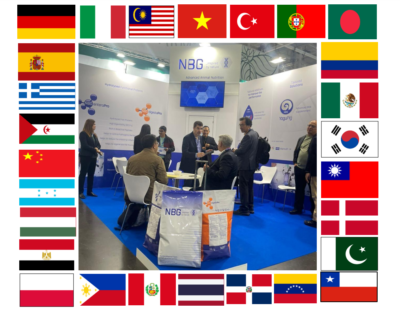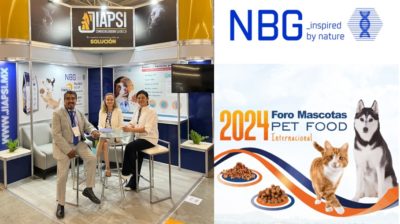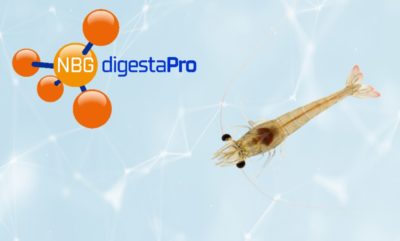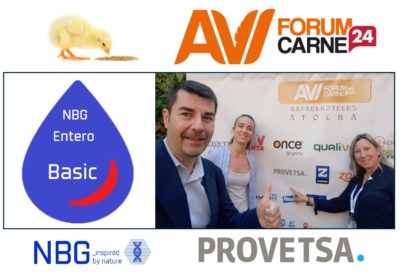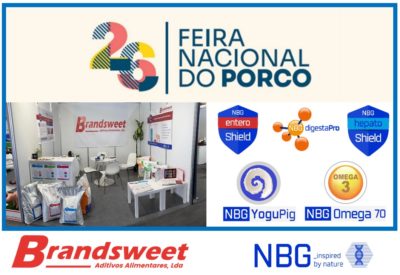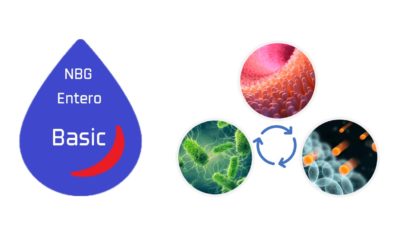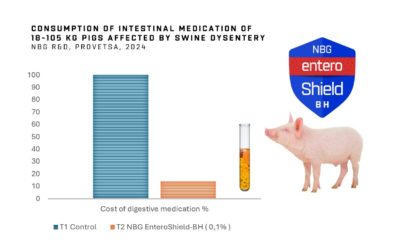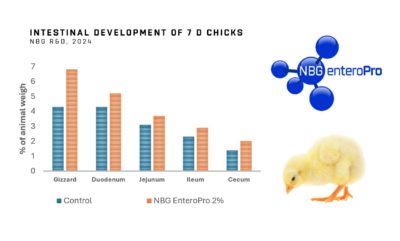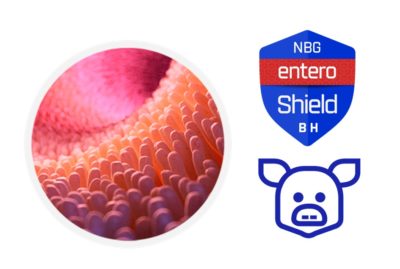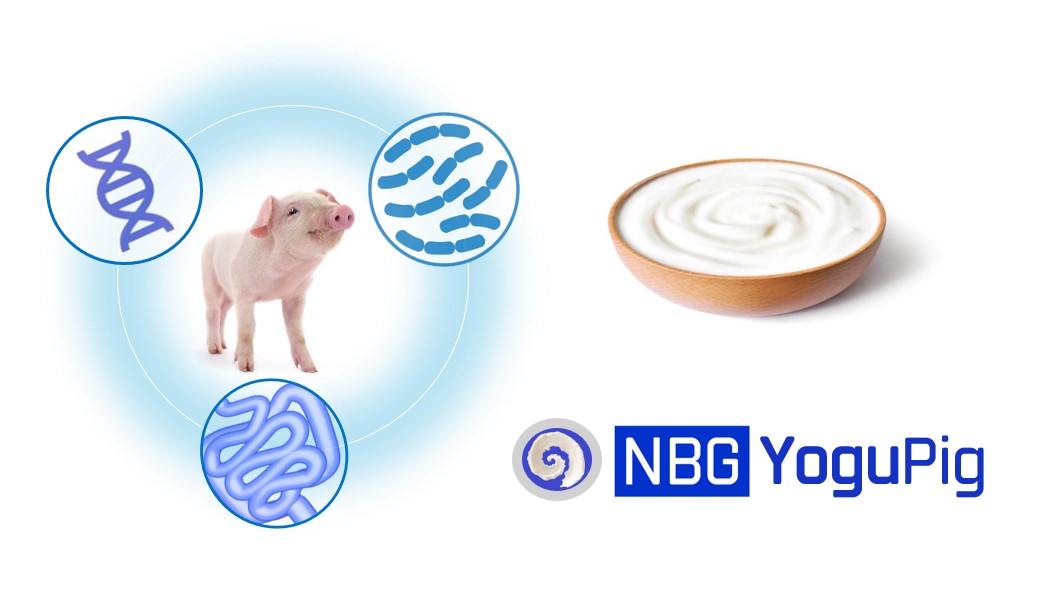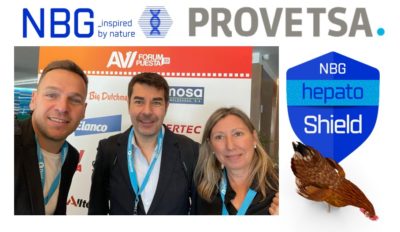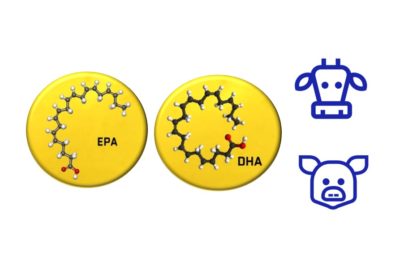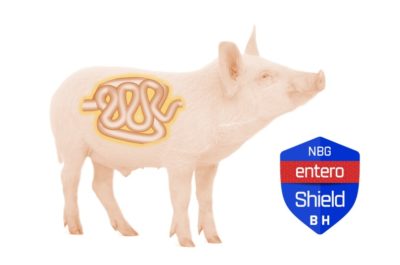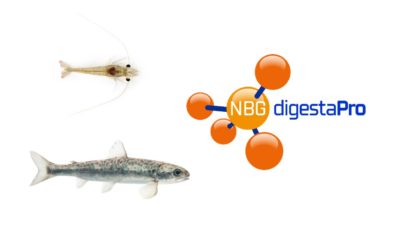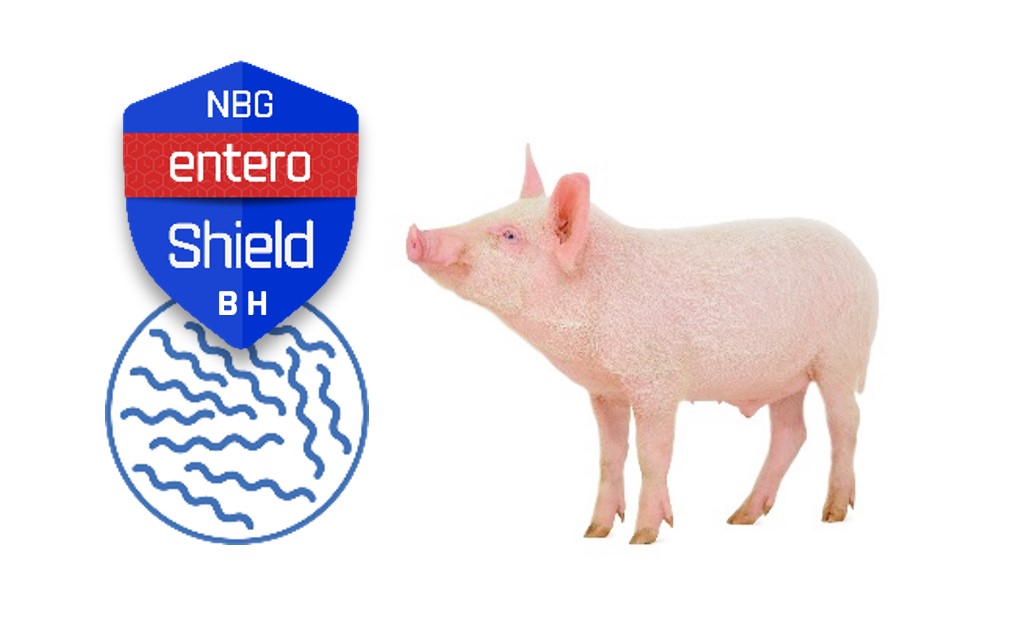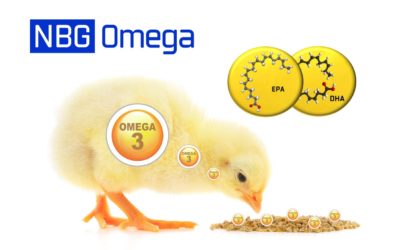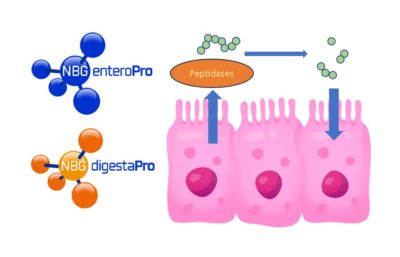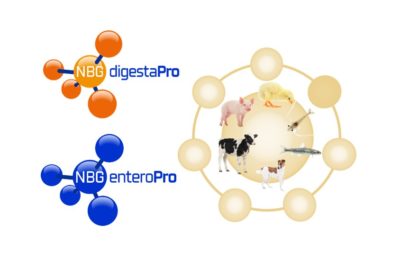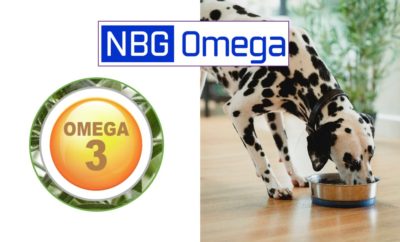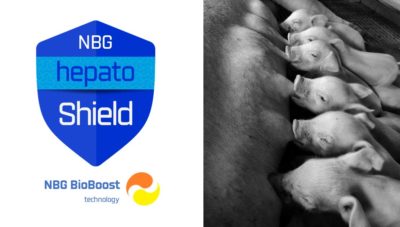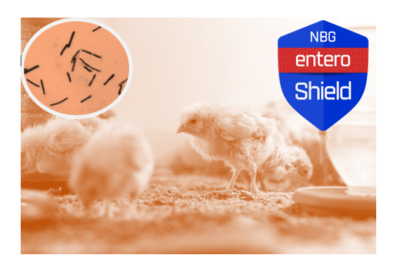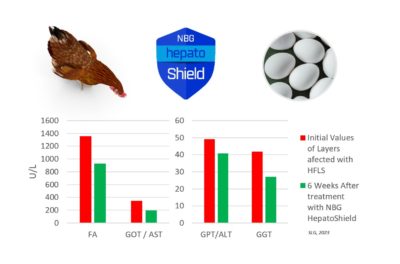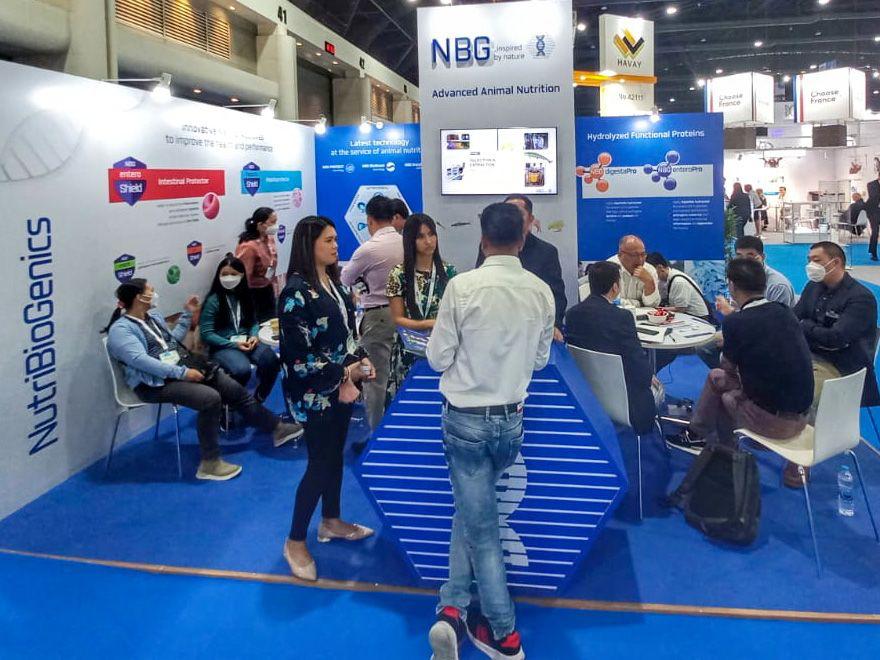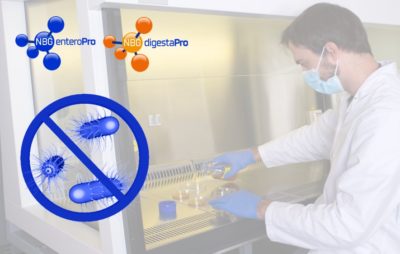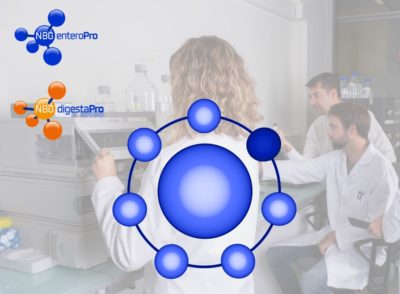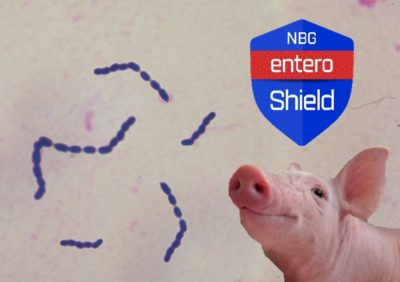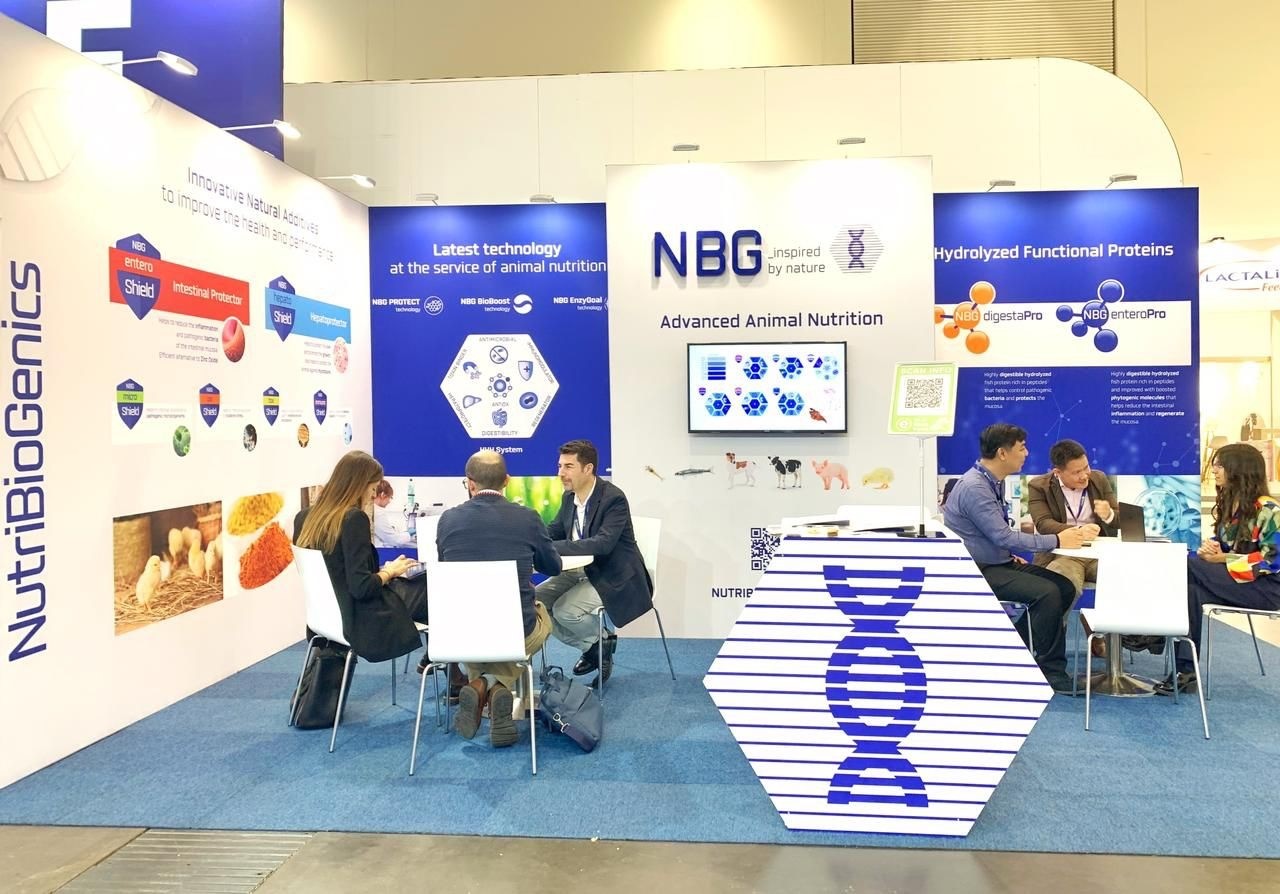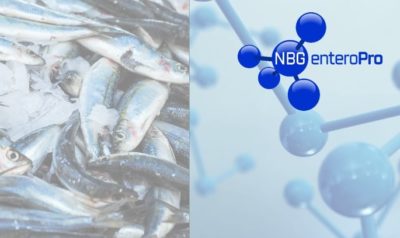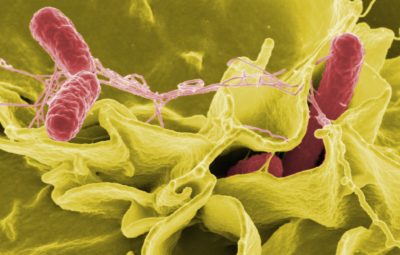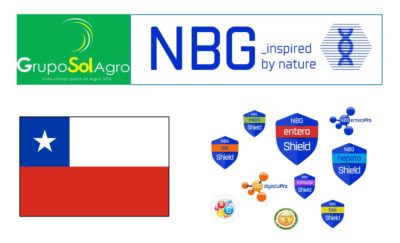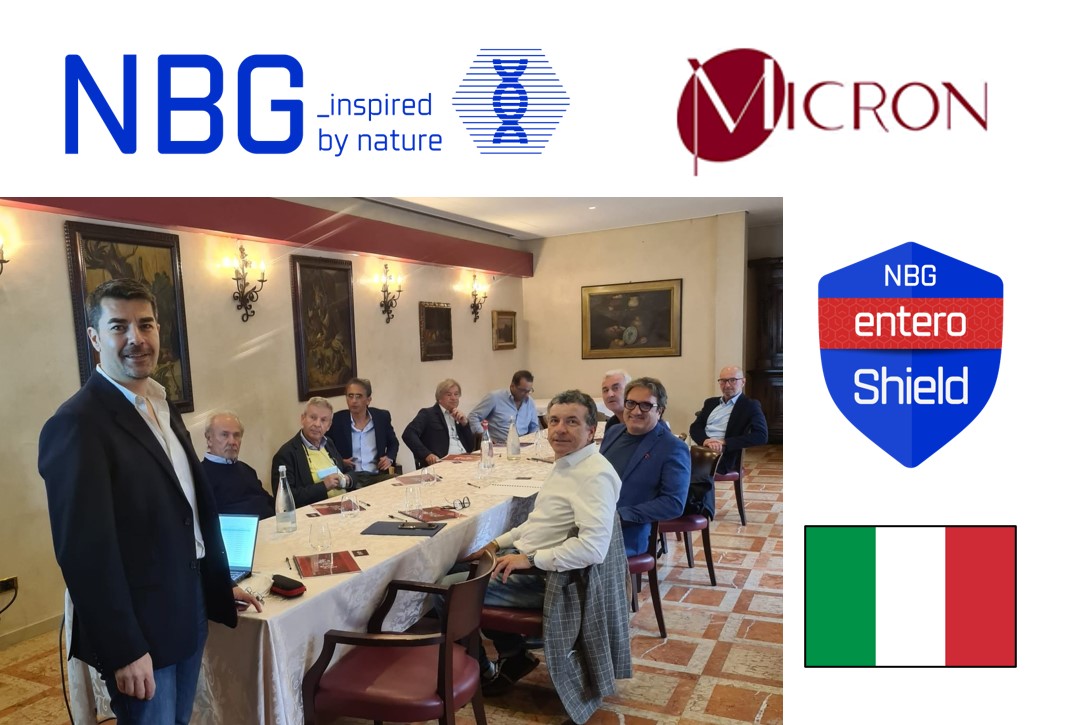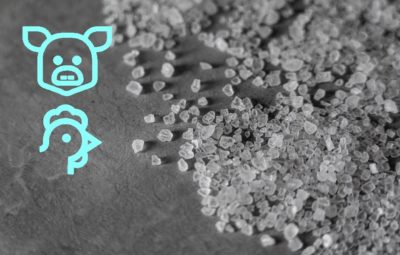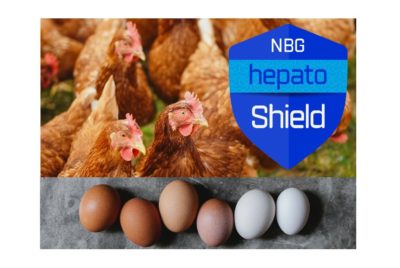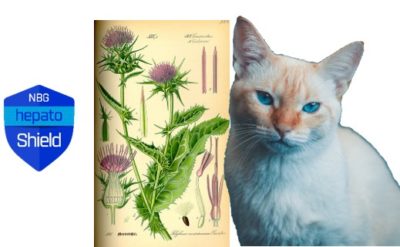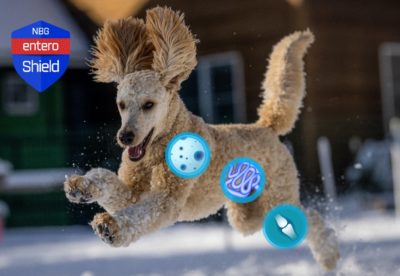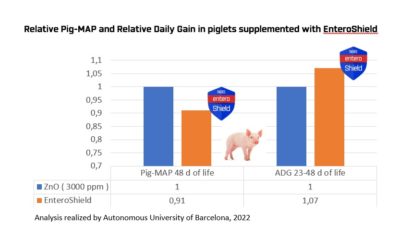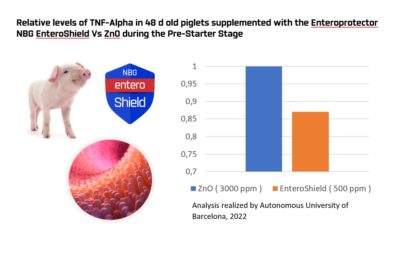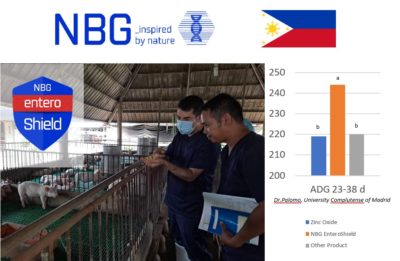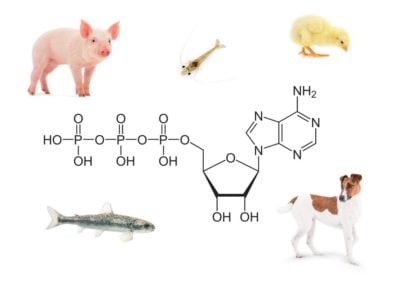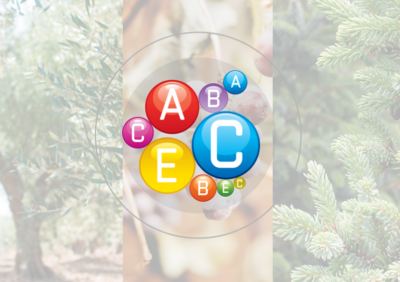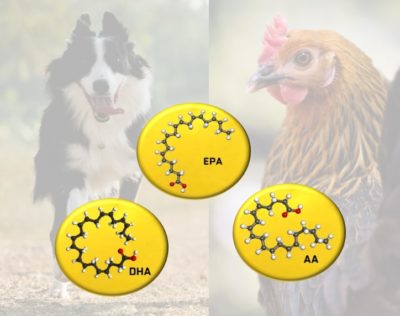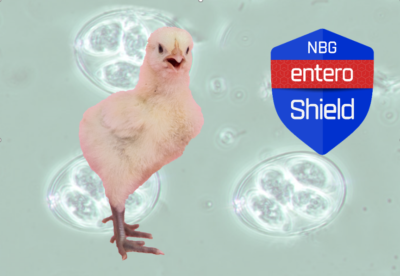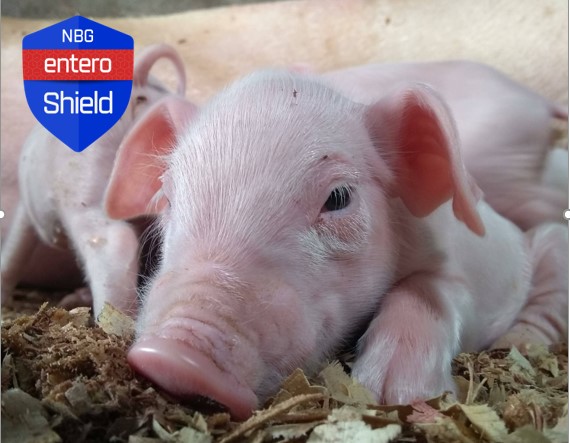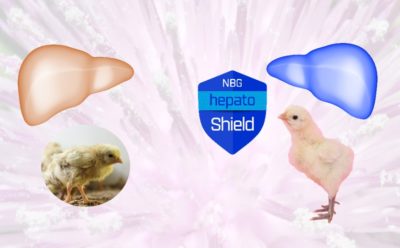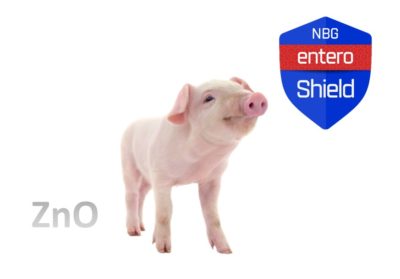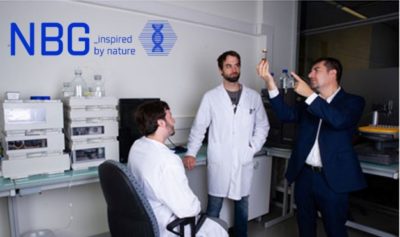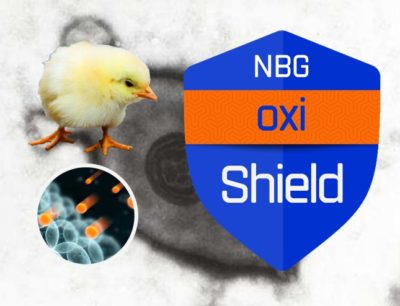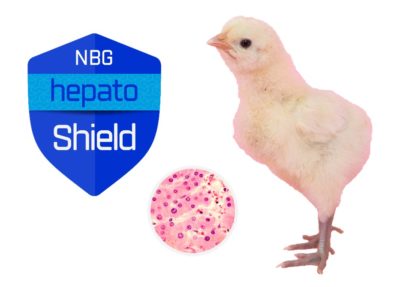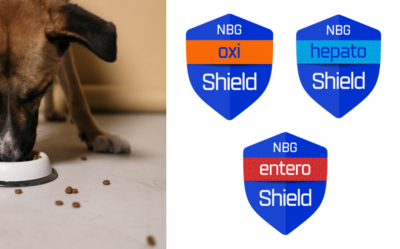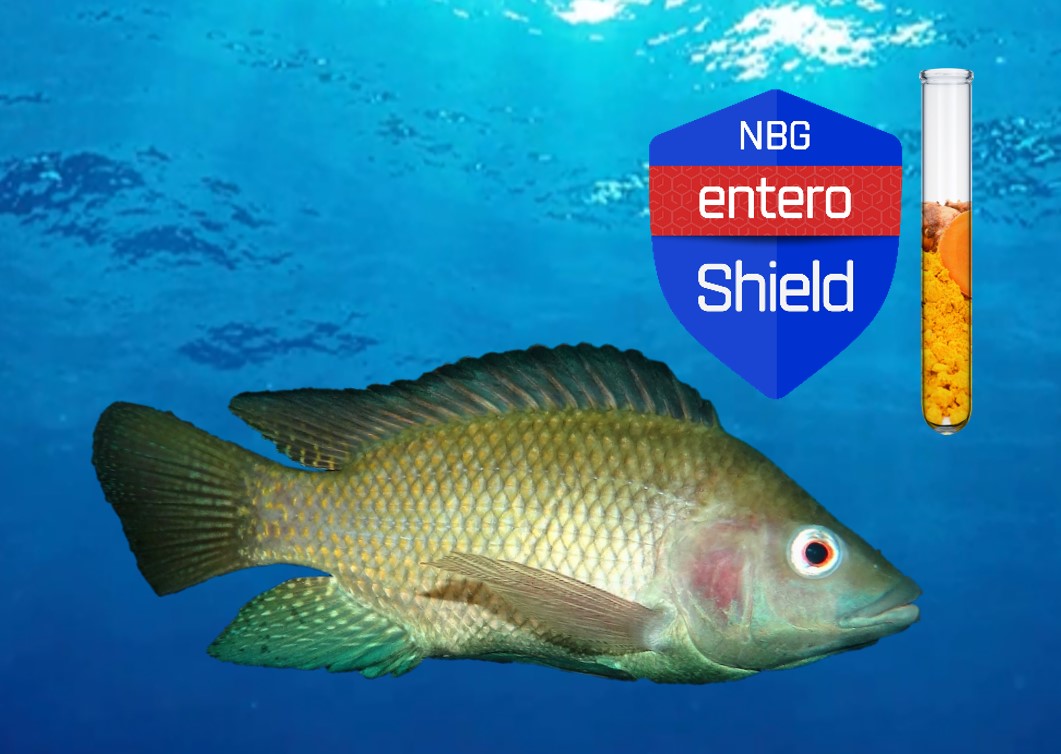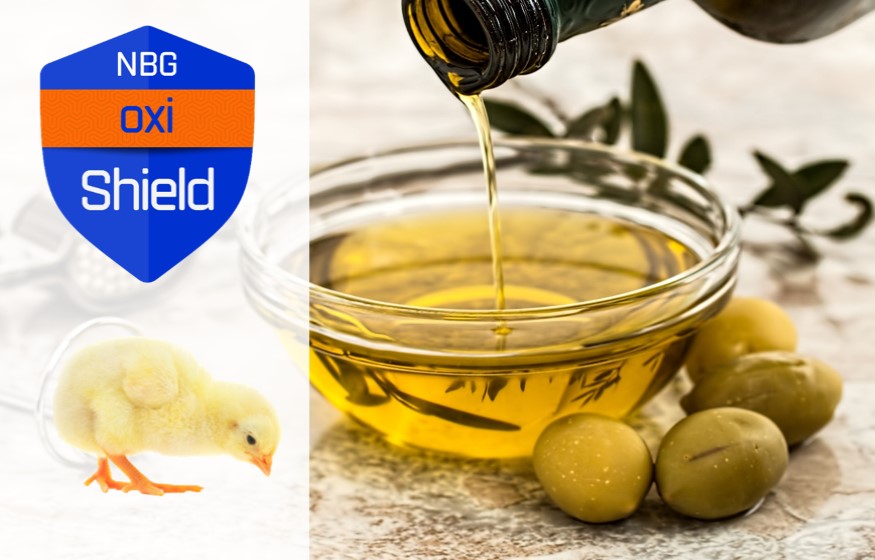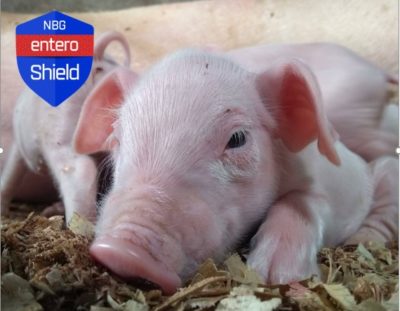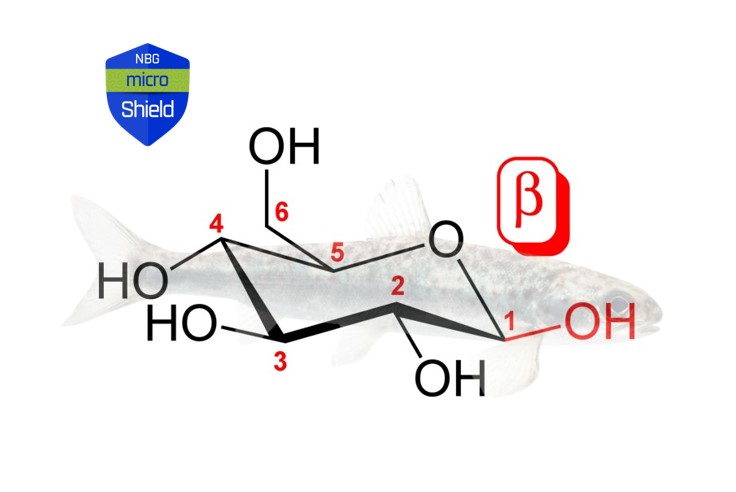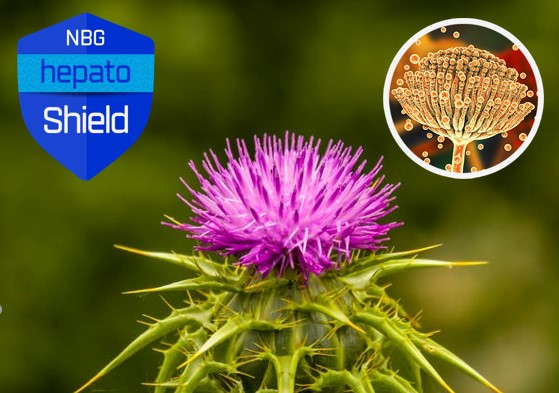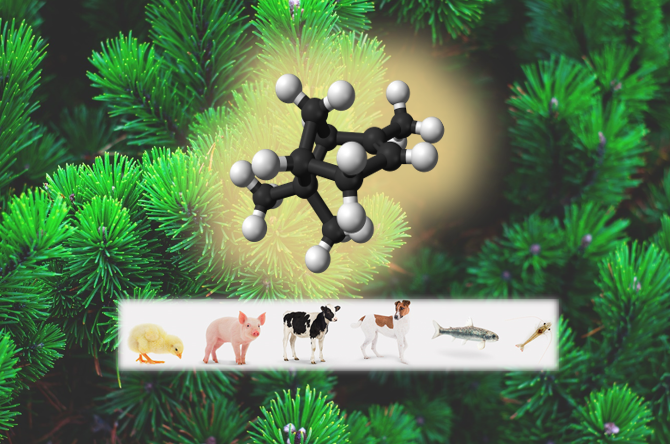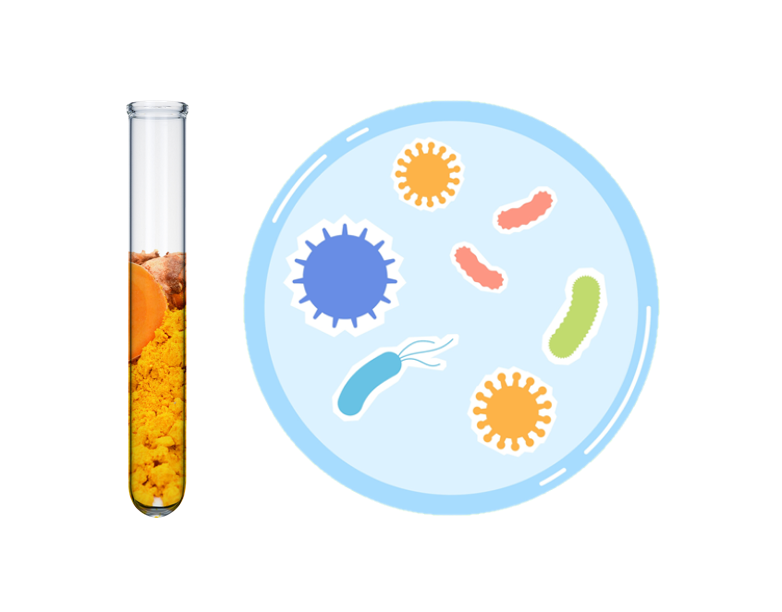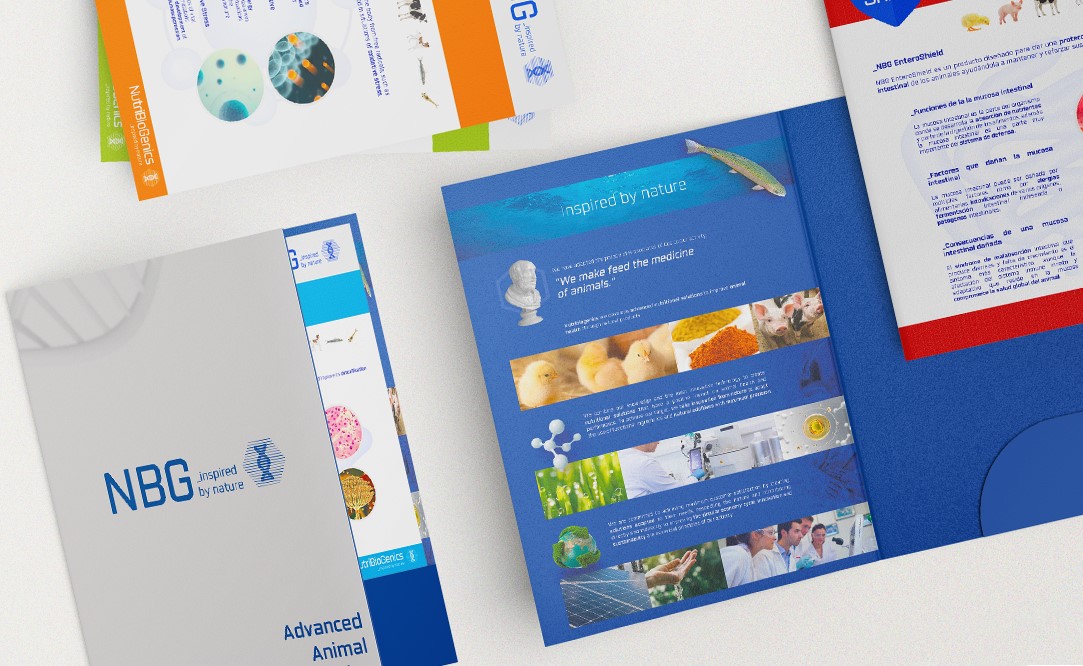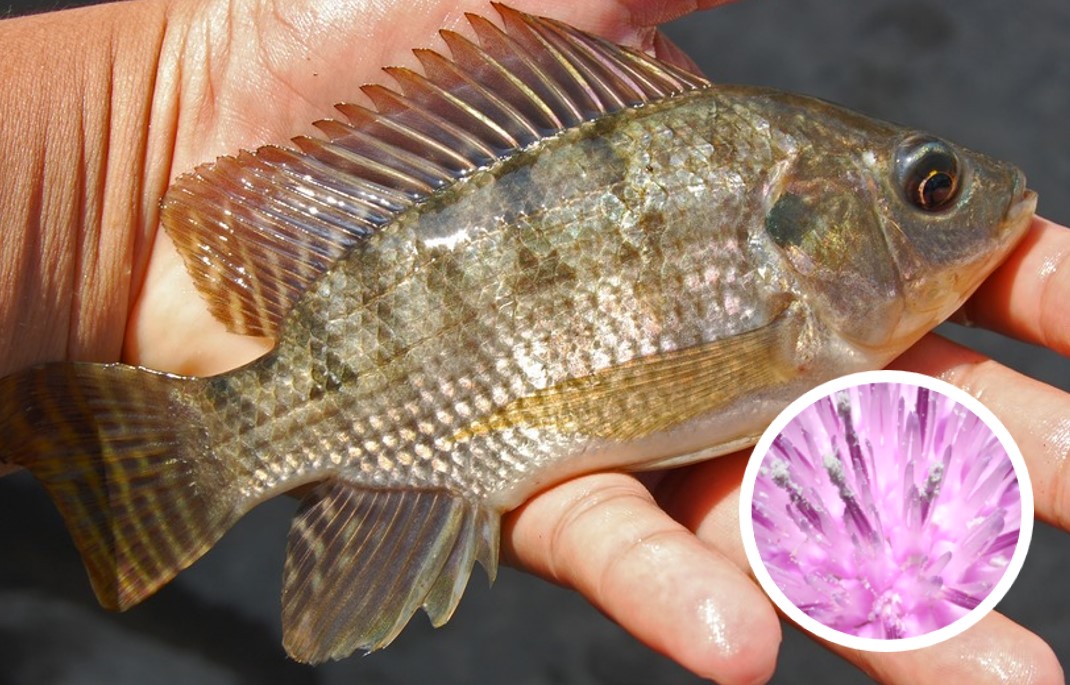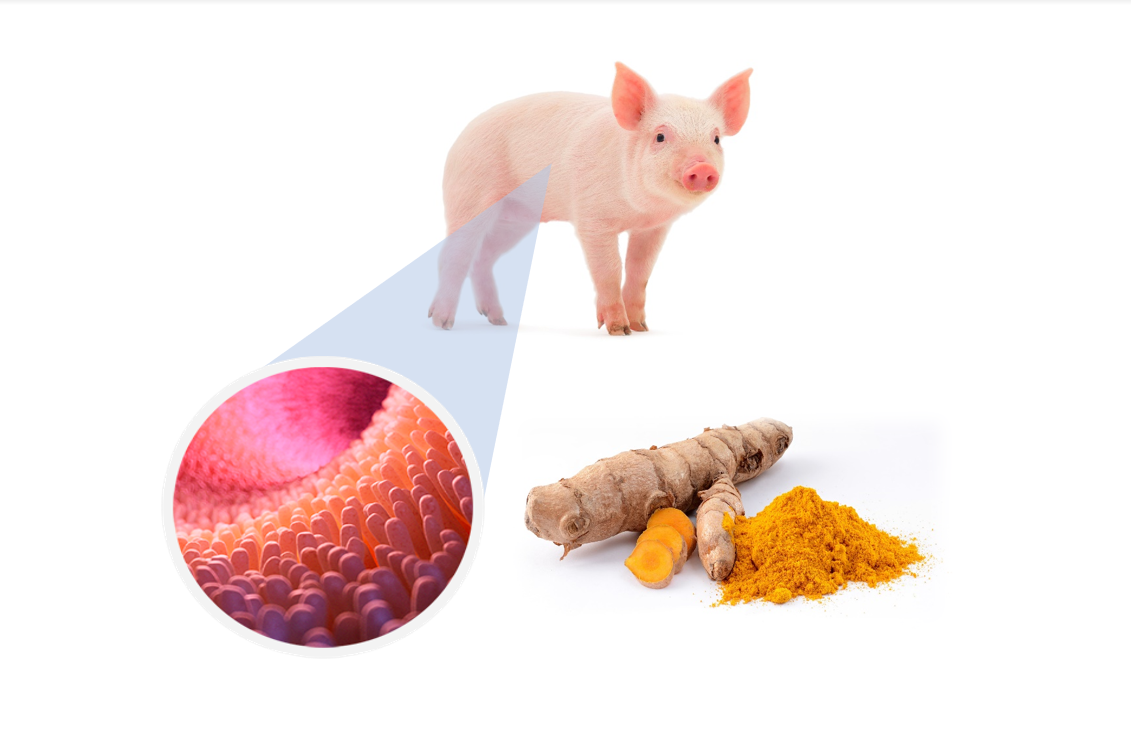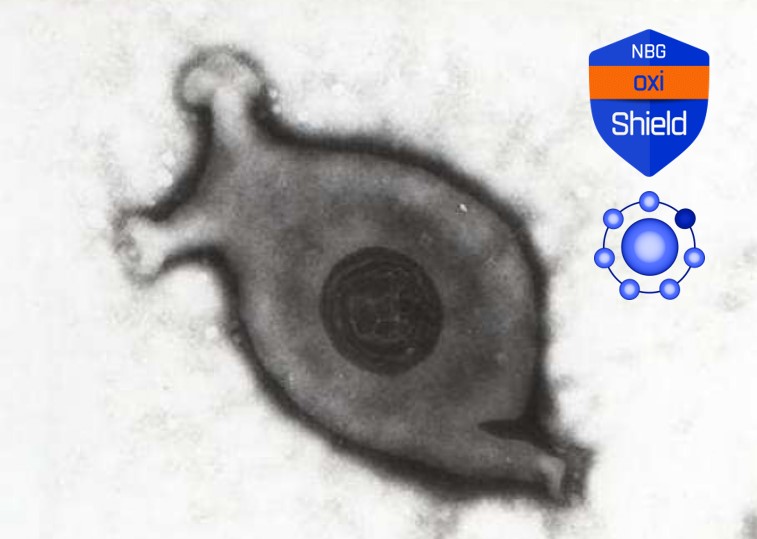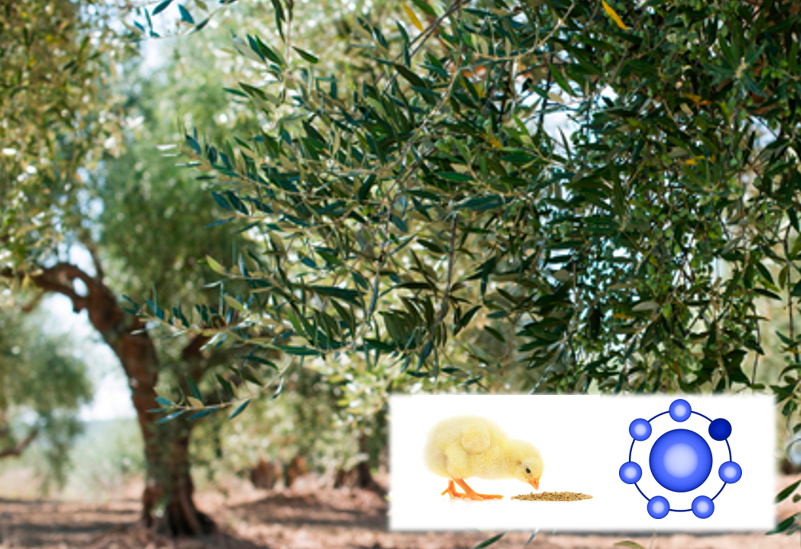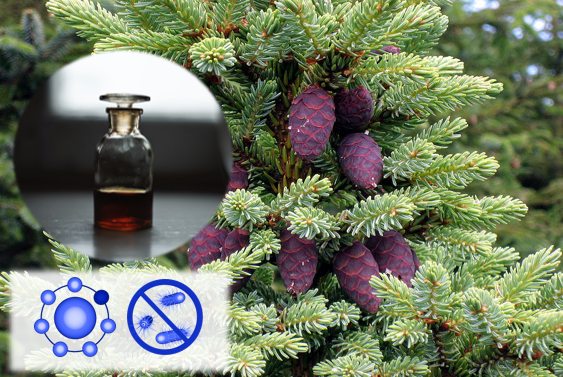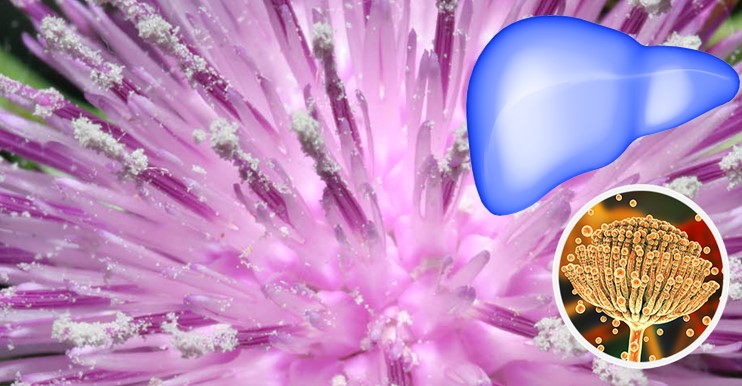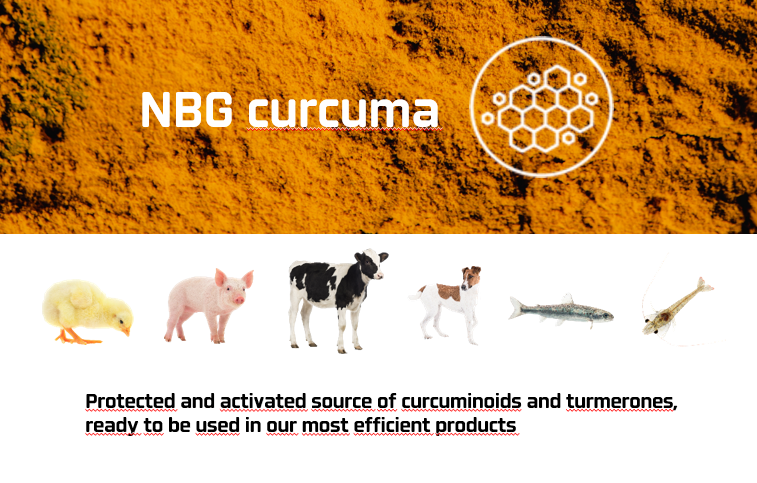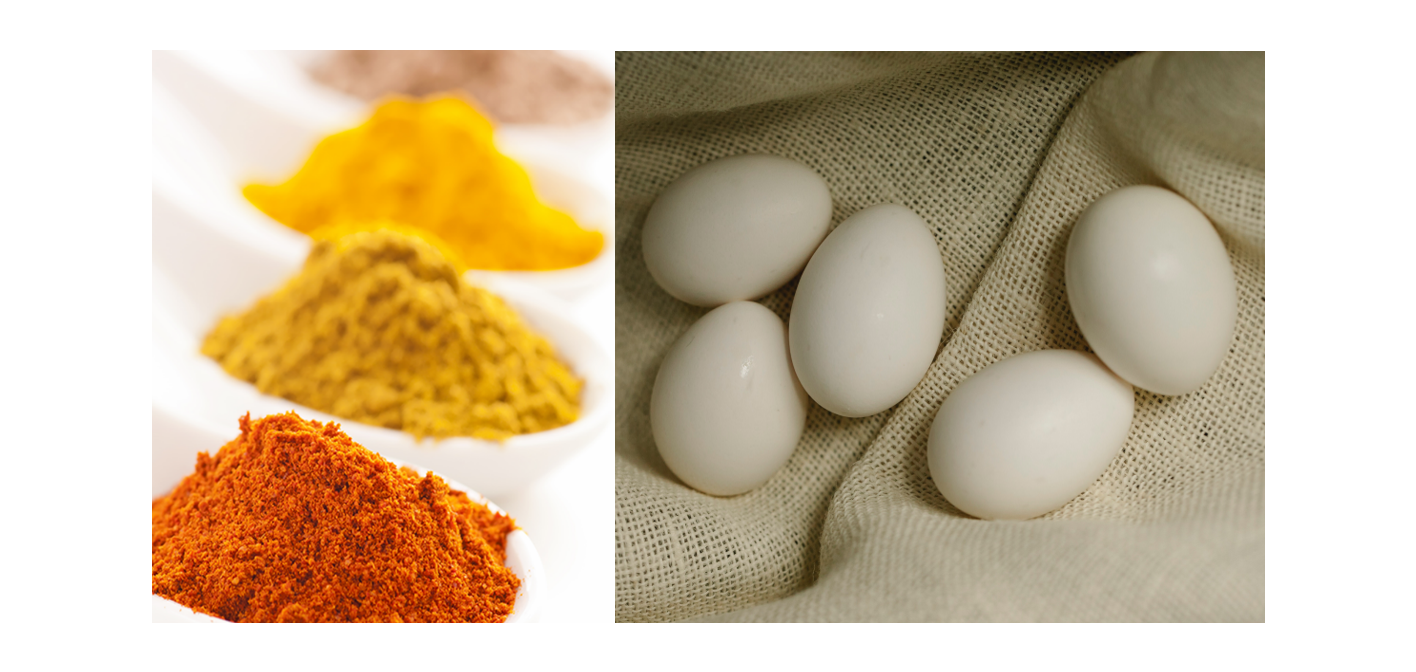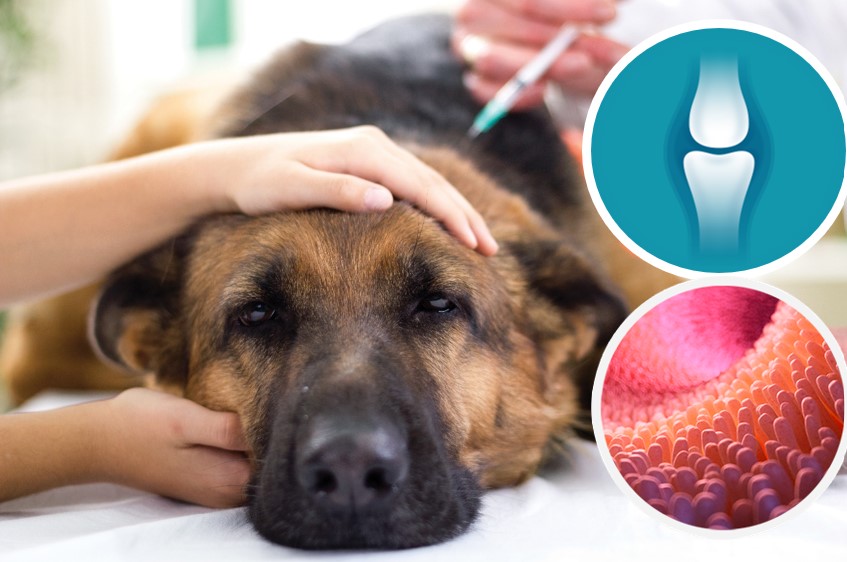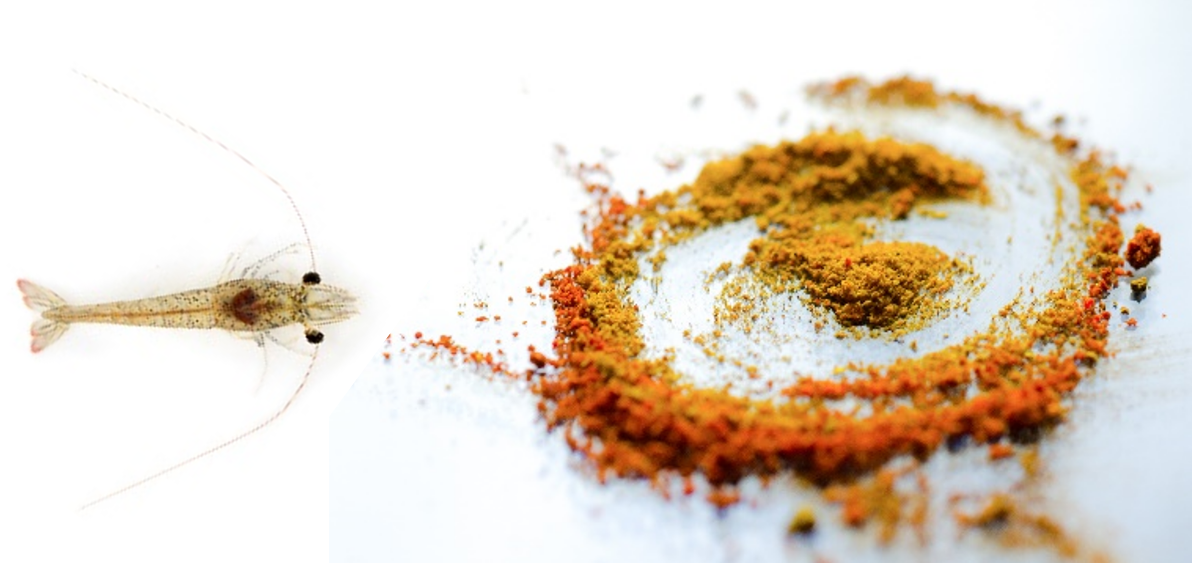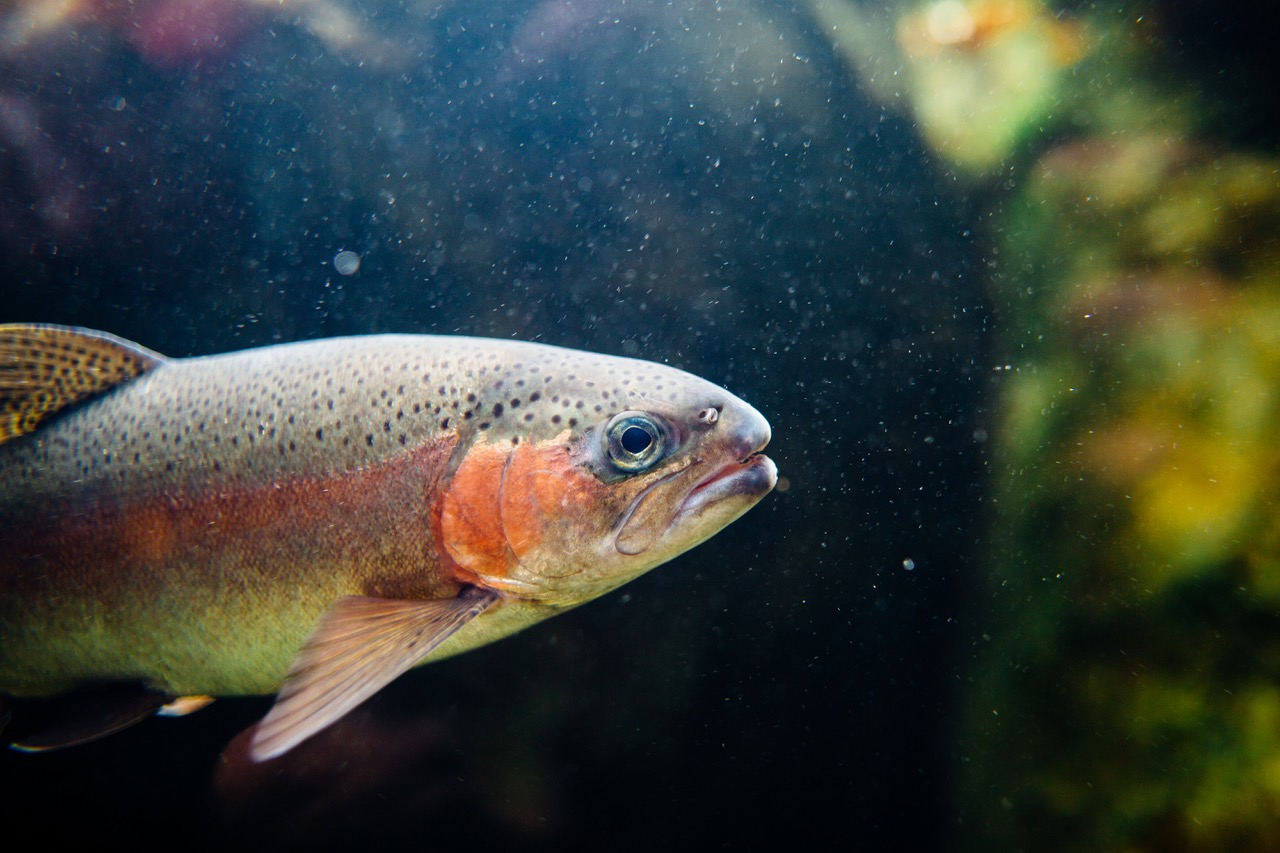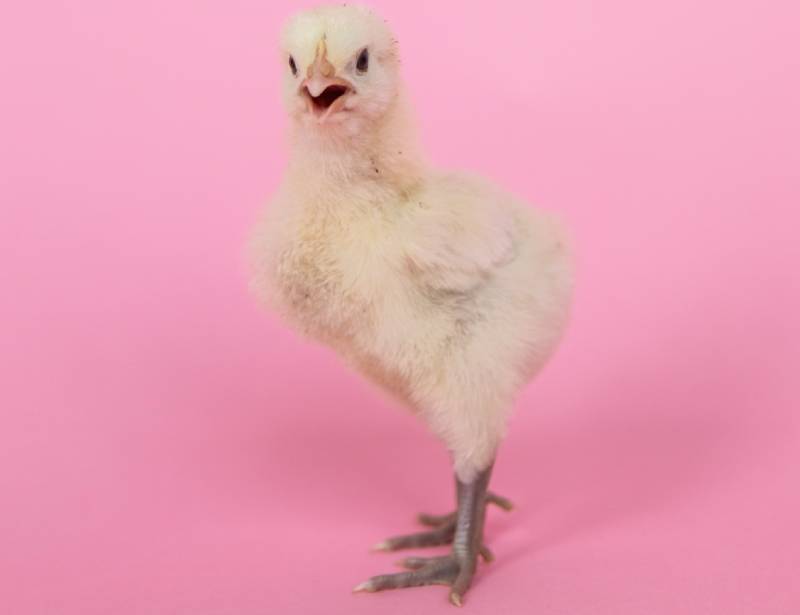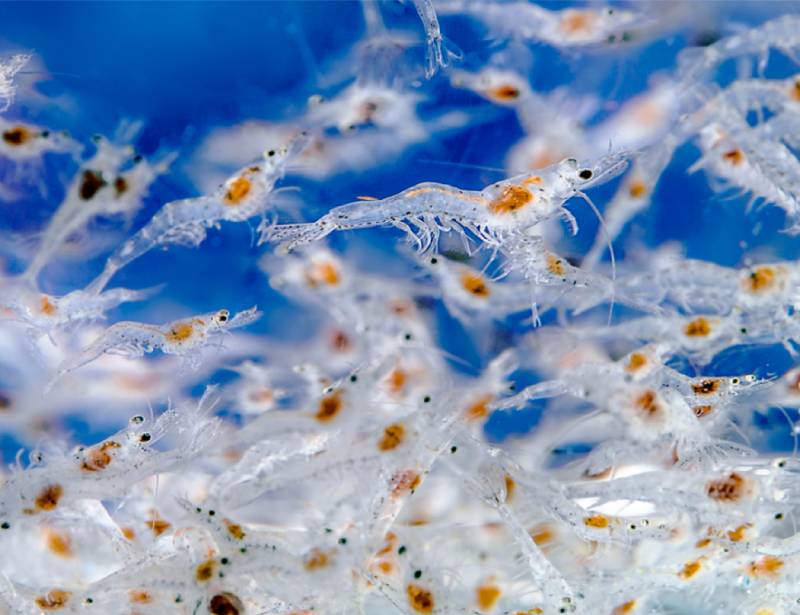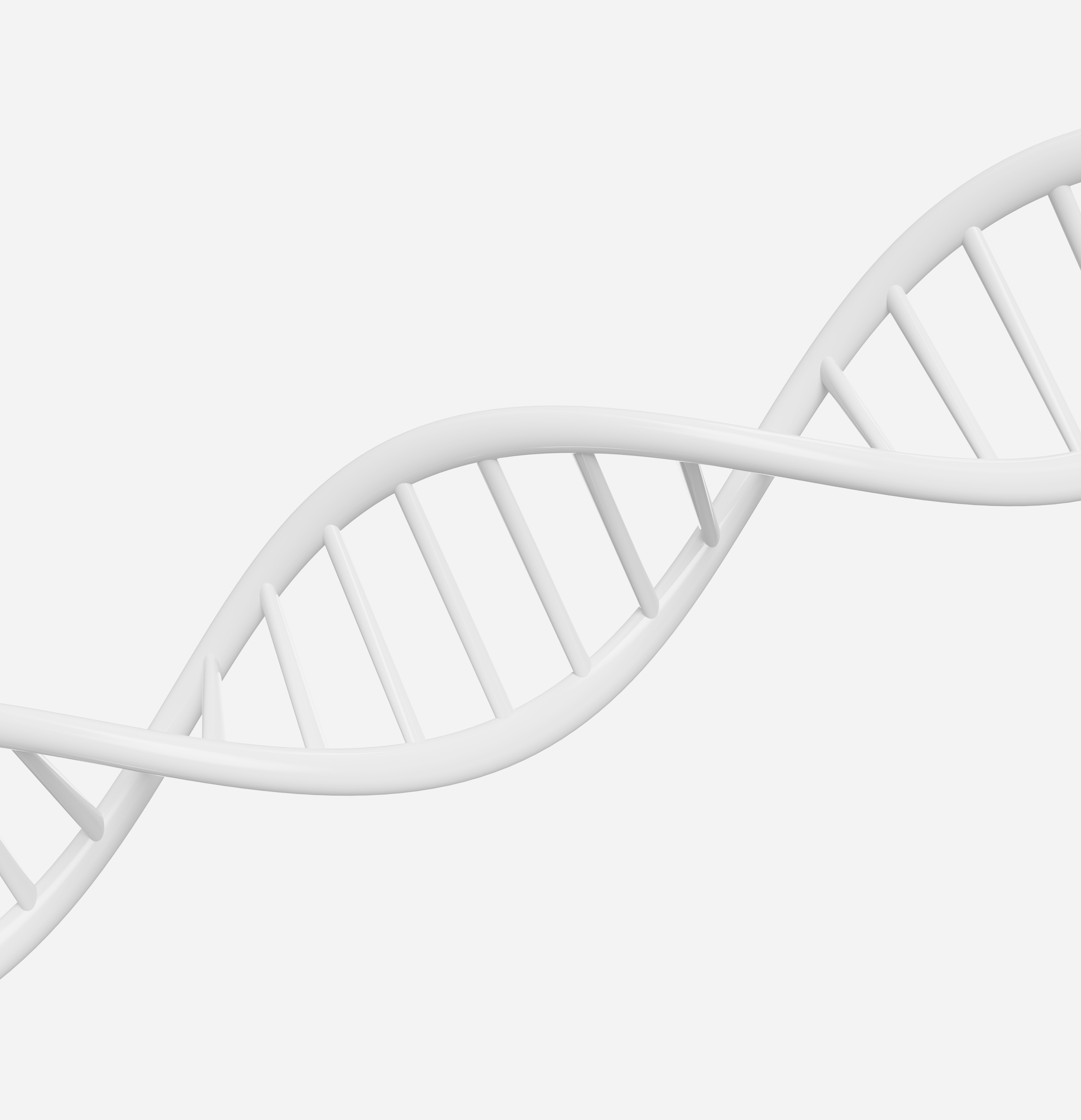
NEWS AND SCIENCE
NEWS
AND SCIENCE
NBG participates in AVEM 2025
Nutribiogenics (NBG) was present at AVEM 2025, participating with a joint stand alongside GlobalVet, our official distributor in the country. The fair, a key meeting point for veterinarians, nutritionists, and [...]
NBG participates as a sponsor at the LX FEDNA Conference on Animal Nutrition and Feeding
On November 5th and 6th, 2025, Nutribiogenics participated as a sponsor at the LX FEDNA Specialization Conference, held in Madrid. Once again, FEDNA brought together researchers, technicians and industry leaders, [...]
NBG at Pet Fair SE Asia 2025 – Bangkok, Thailand
This week, Nutribiogenics (NBG) traveled to Bangkok to take part in Pet Fair SE Asia 2025, one of the most vibrant events of the year for the pet food industry. [...]
NBG participates in PHILSAN 2025 with a presentation on Immunonutrition
Nutribiogenics (NBG) had the honor of participating in the PHILSAN 2025 International Congress, organized by the Philippine Society of Animal Nutritionists, one of the most significant scientific events in the [...]
JIAPSI Nutrition Round 2025
🐶🐱 At NBG, we would like to thank our distributor in Mexico, JIAPSI, for inviting us to take part in their Nutrition Round 2025. It was a real pleasure to [...]
NBG at ILDEX Philippines 2025
Two weeks ago, we had the privilege of participating, together with our distributor ANN, in ILDEX Philippines 2025 — one of the leading events for innovation in animal production in [...]
NBG at ZOOMARK 2025 – Bologna, Italy
We are pleased to announce that this week we participated in Zoomark 2025, held from May 5th to 7th in Bologna, Italy. During the event, we had the opportunity to [...]
NBG at the Middle East Poultry Expo 2025 – Riyadh, Saudi Arabia
Riyadh, Saudi Arabia (KSA) – April 2025 Nutribiogenics (NBG) is participating this week in the Middle East Poultry Expo, one of the most important poultry trade fairs in the world [...]
NBG at FIGAN 2025: Innovation and connection
Dear colleagues, Last week, we had the privilege of participating in FIGAN, a meeting point for innovation in animal production in Spain. 🐷🐔🐮 This event provided us with a valuable [...]
GMP+ FSA Certification: Nutribiogenics and its firm commitment to quality
Dear colleagues, We are pleased to announce that Nutribiogenics has obtained official GMP+ FSA (Feed Safety Assurance) certification, a key step that reinforces our commitment to quality, food safety, and [...]
Thank you for joining us at VIV Asia 2025: we continue to grow together.
Dear colleagues, Last week, we had the privilege of participating in VIV Asia, the epicenter of innovation in animal production on the continent. This event offered us a valuable opportunity [...]
Immunomodulators in Animal Nutrition – NBG ImmunoShield
Dear colleagues, In the constant quest to optimize the health and performance of production animals, nutritional immunomodulators have emerged as essential components. These compounds not only promote cell regeneration, but [...]
New addition to Nutribiogenics
Dear colleagues, We are pleased to announce that Samuel Correa Moreno has joined our team as Area Manager. His appointment represents another step in our commitment to continue growing and [...]
NBG YoguPig: Saving piglets through immunonutrition
Dear colleagues, We are pleased to share with you the extraordinary results obtained with NBG YoguPig after a few days of feeding a litter of piglets affected by viral immunosuppression [...]
EuroTier 2024: Another chapter in our growth story
Dear colleagues, Last week we had the pleasure of participating again in EuroTier, the global meeting point for innovation in animal production. Just two years ago, we presented our products [...]
PET FORUM 2024
Dear colleagues, We are pleased to announce that our distributor in Mexico, JIAPSI, participated in FORO MASCOTAS 2024 in Guadalajara, Mexico. During the event, some of NBG's latest developments to [...]
The use of fish hydrolysates in shrimp nutrition / NBG DigestaPro
Dear colleagues, The growth and profitability of the aquaculture industry, especially in the production of Pacific white shrimp, has led to the search for sustainable and efficient alternatives for feeding [...]
AVIFORUM Carne 2024 – NBG EnteroBasic
Dear colleagues, We are pleased to inform you that on May 29th, we had the pleasure of participating in the AviForum Meat 2024 congress together with our distributor PROVETSA, showcasing [...]
NATIONAL PORK FAIR 2024
Dear colleagues, We are pleased to inform that our distributor in Portugal BrandSweet has participated in the 26th Feira del Porco do Porco held in Montijo (Portugal) last week. During [...]
The synergistic action of organic acids and essential oils in animal nutrition – NBG EnteroBasic
Dear colleagues, The use of organic acids and essential oils in animal nutrition has sparked significant interest due to their potential to improve animal health and performance. Organic acids Organic [...]
Curcumin: A multifaceted product for the treatment of swine dysentery
Dear colleagues, Curcumin, known as the main active component of turmeric, has been the subject of numerous studies due to its anti-inflammatory and antimicrobial properties. This natural compound offers hope [...]
Enzymatic hydrolysates of fish in broiler chicken feed: A nutritional enhancer
Dear colleagues, Fish protein hydrolysates (FPH) are gaining attention as valuable ingredients in animal nutrition, specifically in broiler chicken feed, offering several advantages. Let's take a look at what they [...]
Nutritional management of swine dysentery
Dear colleagues, Swine dysentery is a microbial disease caused by a beta-hemolytic spirochete called Brachyspira hyodisenteriae. Brachyspira is a highly resistant pathogen in feces, capable of persisting for more than [...]
Liquid dairy supplements for piglets
Dear colleagues, A common problem in hyperprolific sows is a lack of sufficient milk production, especially during the week prior to weaning, which can result in litters with high weight [...]
Liver protection in laying hens
Dear colleagues, This week we are pleased to include the link to the interview conducted during AviForum Puesta 2023 with our Director Xavier Córdoba. In the interview, Dr. Córdoba talks [...]
The “magical” abilities of camels
Dear colleagues, Taking advantage of Epiphany, this week we want to dedicate the article to the animals that transported the three wise men to Bethlehem... the camels. Specifically, we will [...]
AVIFORUM LAYING 2023 – NBG HEPATOSHIELD
Dear colleagues, We would like to inform you that last week we participated in the AviForum Puesta 2023 congress together with our distributor PROVETSA, showcasing the benefits of the NBG [...]
Improving fertility in cows and sows with EPA and DHA – NBG Omega
Dear colleagues, As we have seen in previous publications, omega-3 polyunsaturated fatty acids EPA (eicosapentaenoic acid) and DHA (docosahexaenoic acid) are known for their anti-inflammatory effect. Their mechanism of action [...]
Colitis – Brachyspira Hyodysenteriae – NBG EnteroShield
Dear Colleagues, Brachyspira Hyodysentiae is a spirochete that affects pigs, causing symptoms including colitis with superficial coagulation necrosis, epithelial erosion, and severe inflammation of the mucosa and submucosa. Curcumin is [...]
Bioactive peptides in fish nutrition – NBG DigestaPro
Dear colleagues, Fish and crustaceans produced by aquaculture are recently domesticated animals, so it is not surprising that they are susceptible to stress and therefore it is common to observe [...]
Swine dysentery caused by Brachyspira hyodysenteriae and NBG EnteroShield-BH
Dear colleagues,We are pleased to announce that Nutribiogenics has developed NBG EnteroShield-BH with the aim of helping to improve intestinal dysfunctions such as those caused by swine dysentery.This product is [...]
Positive effect of eicosapentaenoic acid (EPA) and docosahexaenoic acid (DHA) on animal performance
Dear colleagues, It is well known how omega-3 fatty acids, especially the long-chain EPA and DHA, can reduce inflammation in the body by competing with omega-6 fatty acids for the [...]
Why do protein hydrolysates improve digestibility beyond their own nutritional contribution?
Dear colleagues, Today we will explain that, once protein is digested, it is absorbed by enterocytes in the form of free amino acids and dipeptides and tripeptides by specific transporters [...]
Antioxidant peptides obtained by enzymatic hydrolysis
Dear colleagues, Although vitamins are the nutrients best known for their antioxidant capacity, almost all nutrient groups have molecules with antioxidant capacity. In fact, we can say that the nutrient [...]
Efectos del aceite de Pescado rico en Omega 3 en la dieta de Perros y Gatos
Dear colleagues, The inclusion of fish oil rich in long-chain omega-3 fatty acids, EPA, and DHA has been shown to be an effective treatment for inflammatory disorders in dogs such [...]
NBG HepatoShield and the reproductive and productive performance of sows
Dear colleagues, Improving and protecting liver function is key to improving the reproductive and lactation performance of sows. Liver protection is a concept that is closely related to the preservation [...]
NBG EnteroShield and Necrotic Enteritis in Chickens
Dear colleagues, Necrotic enteritis (NE) is a major problem in the broiler chicken industry and is caused by Clostridium perfringens. It reduces the weight of animals by more than 10% [...]
NBG HepatoShield and hemorrhagic fatty liver syndrome (HFLS) in laying hens
Dear colleagues, This week, our article analyzes the hepatoprotective effects of enhanced silymarin (NBG HepatoShield) in laying hens. Silymarin is a flavonolignan compound derived from milk thistle seeds (Silybum Marianum) [...]
Nutribiogenics participates in VIV Asia 2023
Dear colleagues,This week we would like to dedicate our publication to thanking all the customers and colleagues who visited our stand during VIV Asia 2023.It has been a great pleasure [...]
Antimicrobial peptides obtained by specific enzymatic hydrolysis
Dear colleagues, This week we would like to address the interesting topic of antimicrobial peptides. Antimicrobial peptides are an attractive natural alternative to antibiotics due to their physicochemical properties, their [...]
Antioxidant peptides obtained by specific enzymatic hydrolysis
Dear colleagues, This week we are pleased to share with you information about an exciting line of research that our R&D department has been working on for several months with [...]
The antimicrobial properties of gold
Dear colleagues, Last year, we took advantage of Epiphany to talk about the health benefits of one of the gifts that the Three Wise Men gave to Jesus: myrrh. This [...]
Wine, Tannins, and Gut Health
Dear colleagues, In this week's article, we will discuss a component of one of the most widely consumed beverages at Christmas: wine. Wine, especially red wine, is a product that [...]
The antimicrobial efficacy of natural candle wax
Dear colleagues, Taking advantage of the fact that we are in the Christmas season, at NBG we wanted to dedicate this post to the main ingredient of one of the [...]
The effect of curcumin on streptococcal biofilms
Dear colleagues, Streptococcal disease in pigs is an endemic problem caused by Streptococcus suis, mainly recognized by neurological clinical signs associated with meningitis, joint stiffness, and post-weaning mortality. The disease [...]
Nutribiogenics participates in EuroTier 2022
Dear Colleagues,This week we would like to dedicate our publication to thanking all our customers and colleagues who visited our stand during Eurotier 2022.It has been a great pleasure to [...]
The Power of Fish Peptides
Dear colleagues, This week we wanted to show you the potential of fish protein hydrolysates as a useful strategy for obtaining products with remarkable nutritional and biological properties in animal [...]
Formic acid as an antimicrobial agent for animal feed
Dear colleagues, This week we wanted to share an interesting review on formic acid. This review shows the direct activity of formic acid as an additive to control bacterial growth [...]
Launch of NBG in Chile
Dear colleagues,This week we are pleased to announce the official launch of Nutribiogenics products on the Chilean market by our distributor Grupo Solagro.We appreciate the warm welcome and interest that [...]
Launch of NBG EnteroShield in Italy
Dear colleagues, This week we are pleased to announce the official launch of NBG EnteroShield on the Italian market by our distributor MICRON. We greatly appreciate the keen interest shown [...]
The importance of electrolyte balance in animal nutrition
Dear colleagues, Since maintaining acid-base balance is essential for life, there are different homeostatic mechanisms that act to ensure its constancy, such as the endogenous buffer system based on phosphates, [...]
Use of enhanced silymarin in laying hens
Dear colleagues, Several studies, in addition to our field trials with some of our customers, indicate that supplementing the diet of laying hens with Silymarin not only appears to improve [...]
Hepatoprotective effect of silymarin in cats
Dear Colleagues, Milk thistle is a plant whose seeds contain silymarin, a flavonoid complex with hepatoprotective properties, which is composed of a mixture of several flavolignans such as silybin A, [...]
Efficacy of curcumin compared to ibuprofen in animals with inflammatory processes
Dear colleagues, In several of our previous publications, we have highlighted some of the properties of curcumin, such as: - Antimicrobial and intestinal antiprotozoal. - Antioxidant and anti-inflammatory for the [...]
Acute phase proteins – Indicators of inflammation
Dear colleagues, In our previous post, we discussed a cytokine called TNF-alpha. This week, we will talk about acute phase proteins. Acute phase proteins are proteins stimulated by certain cytokines [...]
Tumour Necrosis Factor (TNF-Alpha)
Dear colleagues, Years ago, one of the few tools we had to objectively assess improvements in the intestinal health of farm animals was intestinal mucosa histology, an invasive technique that [...]
NBG contributes to improving piglet performance in the Philippines
Dear Colleagues, NBG EnteroShield is a curcumin-based product enhanced with our NBG Bioboost and NBG Protect technologies that improves intestinal health and increases the average daily weight gain of piglets [...]
The role of nucleotides in the diet of monogastric animals
Dear colleagues, This week I will discuss nucleotides, a semi-essential nutrient that, when well balanced in animal diets, is an exceptional ally for improving animal health through nutrition. As a [...]
The Role of Selenium in Pet Health and Nutrition
Dear Colleagues, This week we have chosen a mineral and our pets as the stars of our article. Specifically, we are going to review selenium, a mineral whose deficiency is [...]
Metabolic enhancement of vitamin E
Vitamin E is a group of fat-soluble compounds with antioxidant properties that protect cell membranes and tissues from oxidative damage induced by free radicals. Alpha-tocopherol is the most metabolically active [...]
Omega-3 and Omega-6 fatty acids in animal feed
Dear colleagues, This week we have chosen a topic that is a few years old but still a hot topic: Omega 3 (ω3) and Omega 6 (ω6) fatty acids. Omega [...]
Anticoccidial properties of curcumin against Eimeria tenella in broiler chickens
Dear colleagues, This week we are pleased to present a study demonstrating the anticoccidial properties of curcumin against Eimeria tenella. This trial shows that the better the availability of curcumin, [...]
Turmeric supplementation improves growth, short-chain fatty acid production and modulates the microbiota of weaned piglets.
Dear colleagues, This week we would like to share an article written by several South Korean universities that provides some insights into how the active ingredients in turmeric improve intestinal [...]
Easter and eggs
Dear colleagues, This week, several countries around the world celebrate Easter with various symbols that have become universal, such as Easter bunnies, palm leaves, and decorated Easter eggs. This year [...]
Hepatoprotective effect of Silymarin and NBG HepatoShield
Dear colleagues, This week we wanted to talk to you about Silymarin's hepatoprotective mechanism against lipid peroxidation, demonstrated by its ability to reduce serum levels of ALP and AST enzymes. [...]
Goodbye zinc oxide! Welcome NBG EnteroShield!
Dear Colleagues,This week we would like to share with you that, after hard work in development, we have obtained the first data from a field trial on weaned piglets in [...]
Natural Antimicrobial Peptides in Animal Nutrition
Dear colleagues, One of our team's lines of research is related to antimicrobial peptides. We firmly believe that over the coming years, bioactive peptides, including antimicrobial peptides (AMPs), will be [...]
NBG OxiShield, made with enhanced antioxidants and immunomodulators that help stop Mycoplasma
Dear colleagues, This week we would like to share with you some results obtained with our product NBG OxiShield, specifically from a trial carried out with the prestigious I.R.T.A. Research [...]
NBG HepatoShield, 3 Wirkungen in 1: Wachstumsförderer, Antioxidans und Lösung gegen Mykotoxine
Dear Colleagues, This week we would like to share with you some results obtained with our product NBG HepatoShield, specifically from a trial conducted with the prestigious I.R.T.A. Research Centre. [...]
How to improve the nutritional properties of pet diets
Dear colleagues, Having a good balance of nutritional concepts such as available proteins and amino acids, minerals, vitamins, nucleotides, energy supplied in the form of fats, carbohydrates and non-essential amino [...]
Antimicrobial and immunomodulatory effects of curcumin in fish
Dear colleagues, This week we have chosen an article that shows the powerful direct and indirect antimicrobial effect of curcumin on Nile tilapia. There are several articles that demonstrate the [...]
The effects of hydroxytyrosol on immunocompromised chickens
Dear colleagues, This week, we are pleased to present an article demonstrating the immune-boosting effects of hydroxytyrosol. Specifically, it evaluates how this molecule is capable of restoring the immune system [...]
Effects of curcumin supplementation in low-weight piglets
Dear colleagues, This week we are going to talk about low-weight piglets, which are often found in hyperprolific and/or older sows. Piglets with low birth weight due to intrauterine growth [...]
Yeast extracts, B-glucans and the development of immunity in fish
Dear colleagues, This week we have chosen a review of B-Glucans and their effects on fish immunity and mechanism of action. It is well known that the use of purified [...]
Silymarin and Mycotoxin Binders
Dear colleagues, Currently, treating mycotoxins in the diet with only a mycotoxin binder often yields inconsistent results. From our point of view, the supplier of the toxin collector is not [...]
The Epiphany and the Myrrh
Dear colleagues, During this week, several countries around the world celebrate Epiphany, on 6 January, as one of the Christmas holidays. Tradition has it that three Wise Men came from [...]
New Year, coconuts and lauric acid
Dear Colleagues, This Friday we will begin a new year, and the honour of being the first place in the world to start 2022 will go to the island of [...]
Mistletoe and Christmas
Dear colleagues, This week, as we approach Christmas, we are not going to talk about a plant or extract related to animal health, but rather a plant that can even [...]
The calming effect of alpha-pinene, the main component of pine oils
Dear colleagues, This week we have chosen an article that provides a good example of the calming effect of certain molecules found in nature. I am referring to alpha-pinene, the [...]
The broad antimicrobial potential of curcumin
Dear colleagues, It is well known that curcumin is a potent antioxidant that interacts with different types of radicals, such as hydroxyl radicals (OH), nitric oxide (NO), oxidised glutathione, and [...]
Nutribiogenics attends its first trade fair at VIV MEA in Abu Dhabi
Dear Colleagues, This week we wanted to share this news with you, which is very important to us. After months of hard work and research, we are pleased to announce [...]
Effect of Silymarin on growth performance, serum biochemical indices, antioxidant status, and gene expression in Nile tilapia
Dear colleagues, This week we have chosen an interesting article that demonstrates the high potential of silymarin in fish nutrition. Specifically, the trial was conducted on Nile tilapia. Several trials [...]
Enhanced turmeric extract and gut health in piglets
Dear colleagues, This week we have chosen an article that shows how turmeric extract enhanced with a powerful natural antioxidant such as resveratrol is capable of increasing growth and improving [...]
How Mycoplasma infection in chickens causes oxidative stress, affecting immune function and tissue structural integrity
Dear colleagues,We have recently obtained very interesting results from our natural metabolic antioxidant NBG OxiShield when challenged by heat and mycoplasma in chickens.NBG OxiShield is a product designed as a [...]
Effects of olive extract on performance, intestinal function and gut microbiota in broiler chickens
Dear colleagues, This week we have chosen an article that shows the positive effects of olive extracts in animal nutrition. Olives are the fruit of olive trees, a type of [...]
Properties of α- and β-Pinene as antioxidant, anti-inflammatory and antimicrobial molecules
Dear colleagues, Many articles have been written about various types of phytogenic molecules present in different plant extracts, but we see very few articles related to these interesting molecules present [...]
The effect of different levels of silymarin on the growth rate and morphology of the liver in chickens when fed diets contaminated with mycotoxins
Dear colleagues, This week we are pleased to present an article showing the positive effects of silymarin from Sybilum Marianum seeds against the hepatotoxic effects of aflatoxin B1 / AFB1 [...]
How to use turmeric extracts in animal nutrition
Dear colleagues, In some of our previous publications, we showed you the benefits of curcumin, and since it is a molecule that is very sensitive to the digestive process, we [...]
The use of Moringa oleifera in animal nutrition
Dear colleagues, This week we have chosen an article that summarises the benefits of Moringa Oleifera in ruminant nutrition. Moringa could be considered a multipurpose tropical tree used in agriculture, [...]
Effect of natural antioxidants on egg production and quality in laying hens
Dear colleagues, This week we have chosen an article related to the use of phytogenics in laying hens. The main objective of this study was to determine the effect of [...]
The gut microbiome of healthy and arthritic dogs
Dear colleagues, This week we have chosen an article that attempts to link the gut microbiome and osteoarthritis in dogs, a topic that does not surprise me when we consider [...]
Immunological and bactericidal effects of turmeric extract in shrimp
Dear colleagues, This week I have chosen an article that discusses an alternative to antibiotics in shrimp feed. We are accustomed to seeing the effects of turmeric extracts in vertebrates, [...]
Nutritional immunity of fish intestines: important knowledge for sustainable aquaculture
Dear colleagues, This week, I propose an interesting review of intestinal health... but in fish. Although the intestinal immune system in fish is less developed than in mammals or birds, [...]
Antimicrobial activity of resveratrol-derived monomers and dimers against foodborne pathogens
Dear colleagues, This weekend, I have chosen an article that highlights the beneficial antimicrobial properties of resveratrol and, in particular, some of its derivatives. I would also like to mention [...]
The application of antimicrobial peptides as growth and health promoters in pigs
Dear colleagues, If you need a basic summary on the use of Antimicrobial Peptides (AMP) in animal feed, this is the article for you... Access to the article
Colostrum and milk yield, blood immunity indices, and mineral levels in Holstein cows receiving organic sources of Mn, Zn, and Cu
Dear colleagues, I have finally decided to publish something related to ruminants, specifically dairy cows and supplementation with Zn, Cu and Mn, key minerals for coping with oxidative stress. In [...]
Association between heat stress and oxidative stress in poultry; mitochondrial dysfunction and dietary interventions with phytochemicals
Dear colleagues, This article explains in detail why heat stress through mitochondrial dysfunction causes oxidative stress in broiler chickens, which explains why the use of phytogenic antioxidants alleviates the problem. [...]
Probiotics in crustacean aquaculture
Dear colleagues, This practical article provides a good overview of the different types of probiotics for prawns. Some of them, such as Vibrio, Aeromonas, and Alteromonas, are quite different from [...]
Nutrigenomic activity of plant-derived compounds in health and disease: Results of a dietary intervention study in dogs
Dear colleagues, This article compares different natural phytogenics in canine nutrition to reduce oxidative stress and treat chronic inflammatory diseases. Please note that because grape anthocyanins exhibit toxicity in dogs [...]
Maslinic acid as a feed additive to stimulate growth and hepatic protein turnover rates in rainbow trout (Onchorhynchus mykiss)
Dear colleagues, Some of you have asked for examples of phytogenic additives in aquatic nutrition, so I have chosen an example related to salmonids (rainbow trout) and one of the [...]
Anticoccidial activities of extracts from Salvadora persica (arak), Zingiber officinale (ginger) and Curcuma longa (turmeric) in the control of coccidiosis in chickens
Dear colleagues, This week, I have chosen an article that presents three natural phytogenic anticoccidial alternatives: S. persica (arak), Z. officinale (ginger), and C. longa (turmeric). All three products show [...]

